There are cities that feel like a crossroads. Istanbul is the crossroads—not as a slogan, but as a lived reality. You move through streets that hold centuries layered on top of each other: Roman columns in overgrown courtyards, Ottoman mosques with domes patterned like the night sky. Every day here feels like crossing a threshold.
Arrival is gradual. You first see the Bosphorus through the bus window, blue and glittering. Then you’re stepping onto a ferry, wind in your face, seagulls pacing the boat. In the market, the smell of grilled corn and roasted chestnuts pulls you in. Strings of red peppers hang like beads in the sun, rugs spill in piles of pattern and wool outside shop doors, and somewhere in the middle of it all is a stall pressing fresh pomegranate juice, the vendor’s hands stained red.
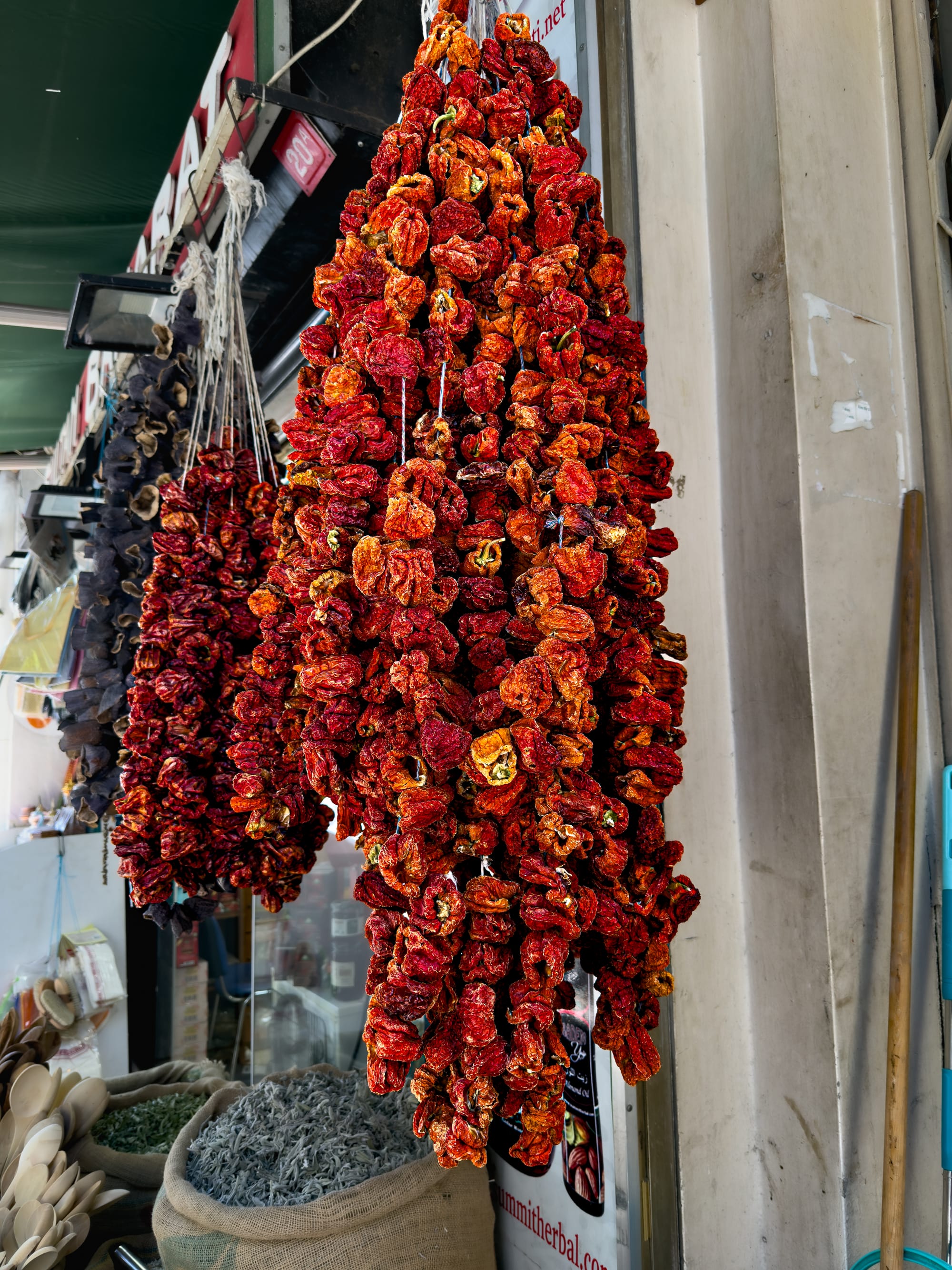
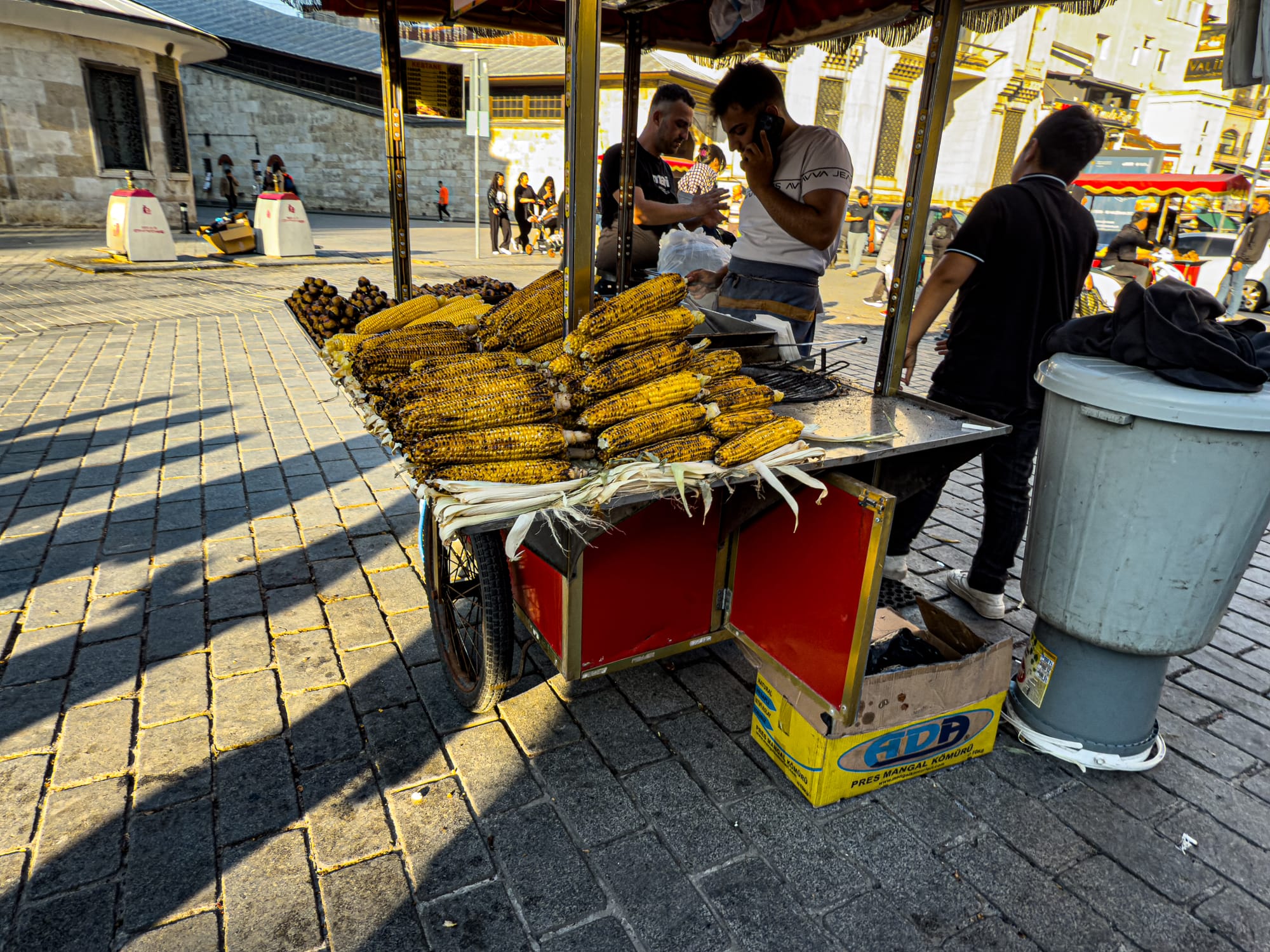
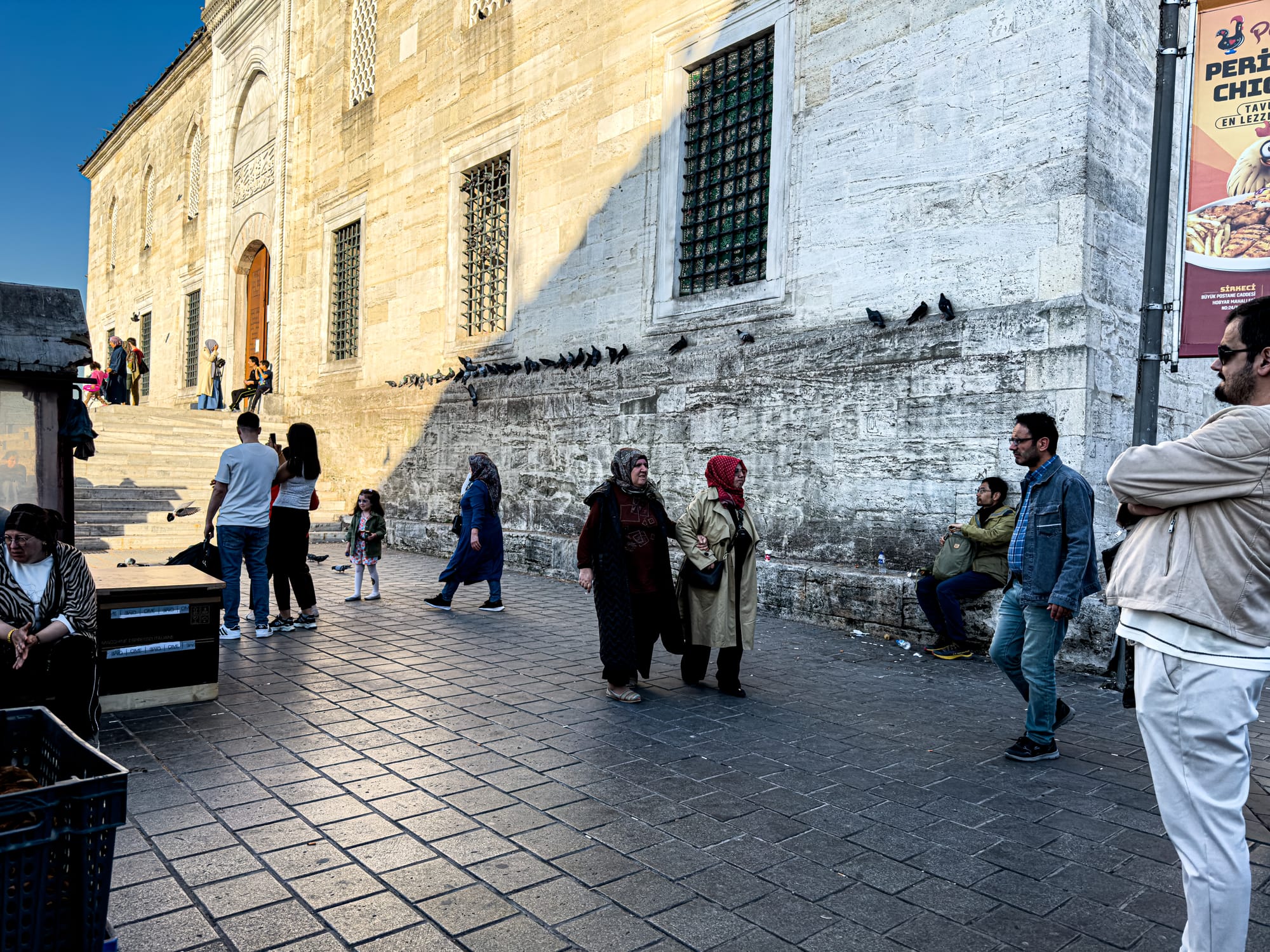
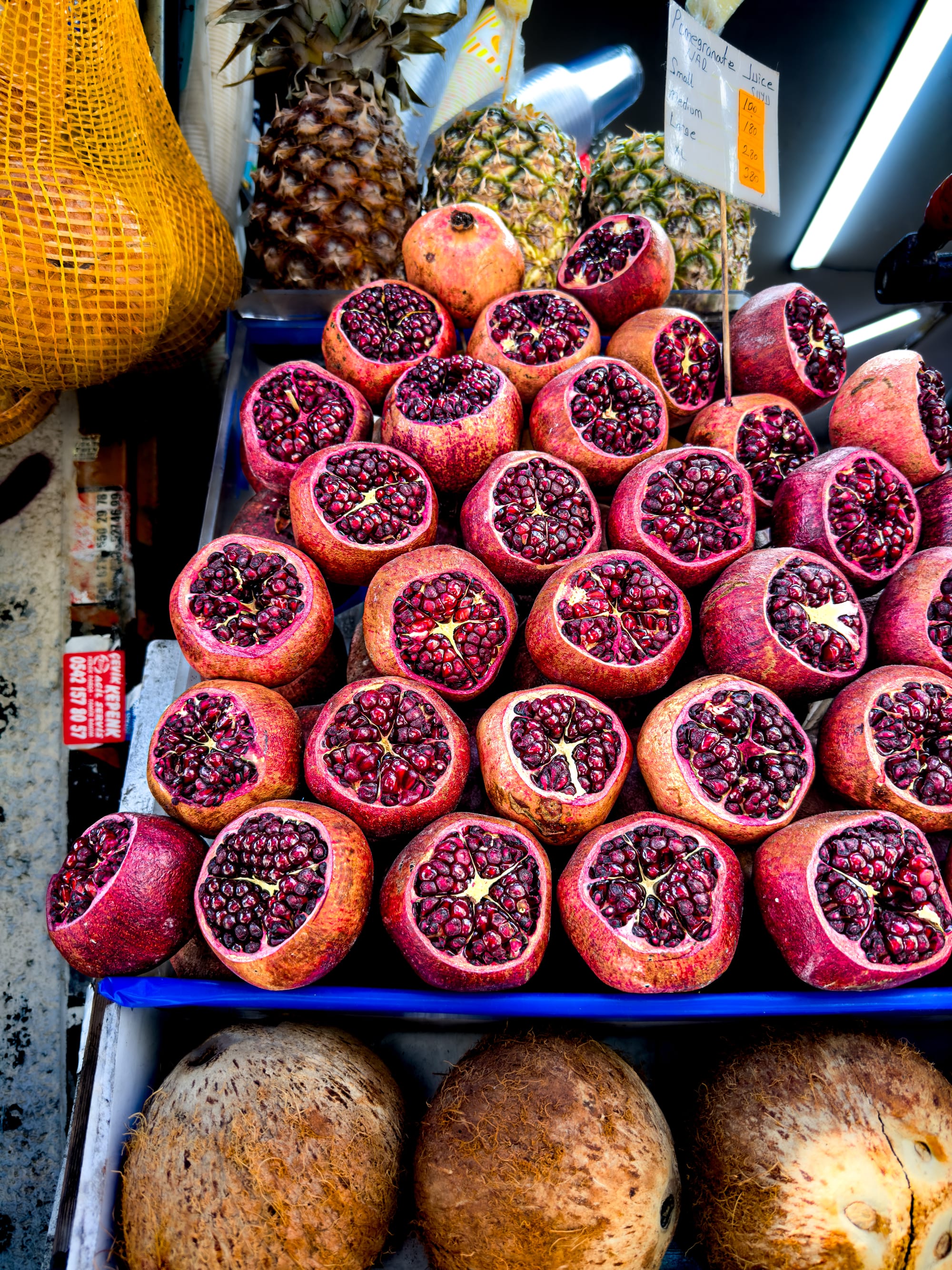
Dried peppers, roasted corn, mosque steps, and fresh pomegranates on Istanbul’s streets
The first days are an initiation into the city’s scale. It’s not a place you can understand at once—it resists being taken in as a whole. Neighborhoods feel self-contained, each with its own currents, and moving between them can feel like crossing borders.
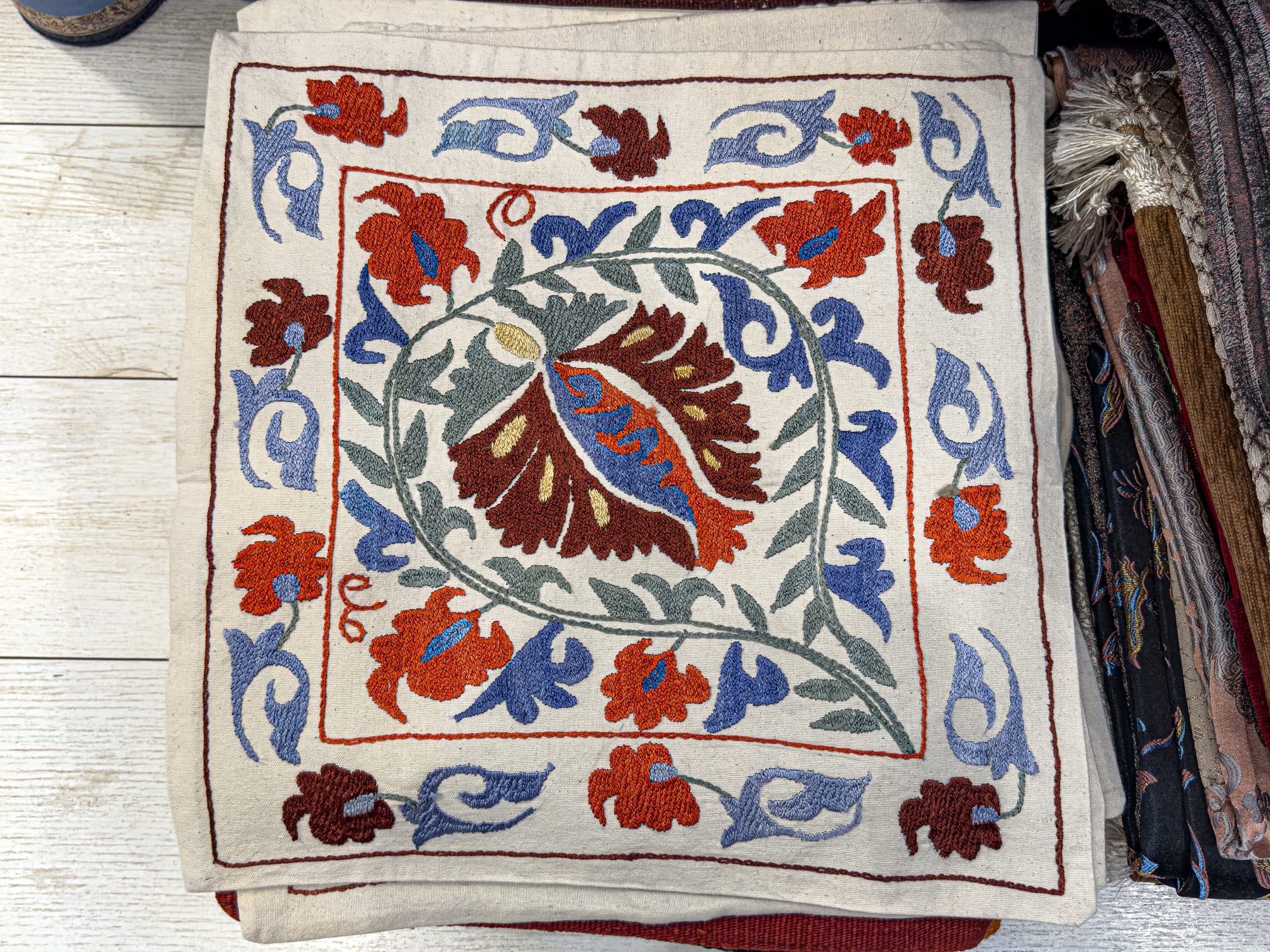
Istanbul is a city that refuses to flatten itself for your convenience. It asks you to navigate the unevenness of its streets, the irregularities of its transit, the unpredictable pace of its days. It’s a place where you can lose time in a conversation with a shopkeeper, miss a tram because you stopped to watch the cats, or find your route interrupted by a street procession you didn’t expect. This friction is part of its gravity—it keeps you present, adjusting, awake to the small shifts in the air.
A city of layered worlds
Kadıköy hums with the rhythm of arrivals and departures. Cafés are packed with students and freelancers, shopfronts spill books and vinyl onto the street, and the seaside promenade invites long walks between bursts of work. Moda’s waterfront becomes a daily reset—ferries sliding in and out, gulls catching the wind over the Marmara Sea.
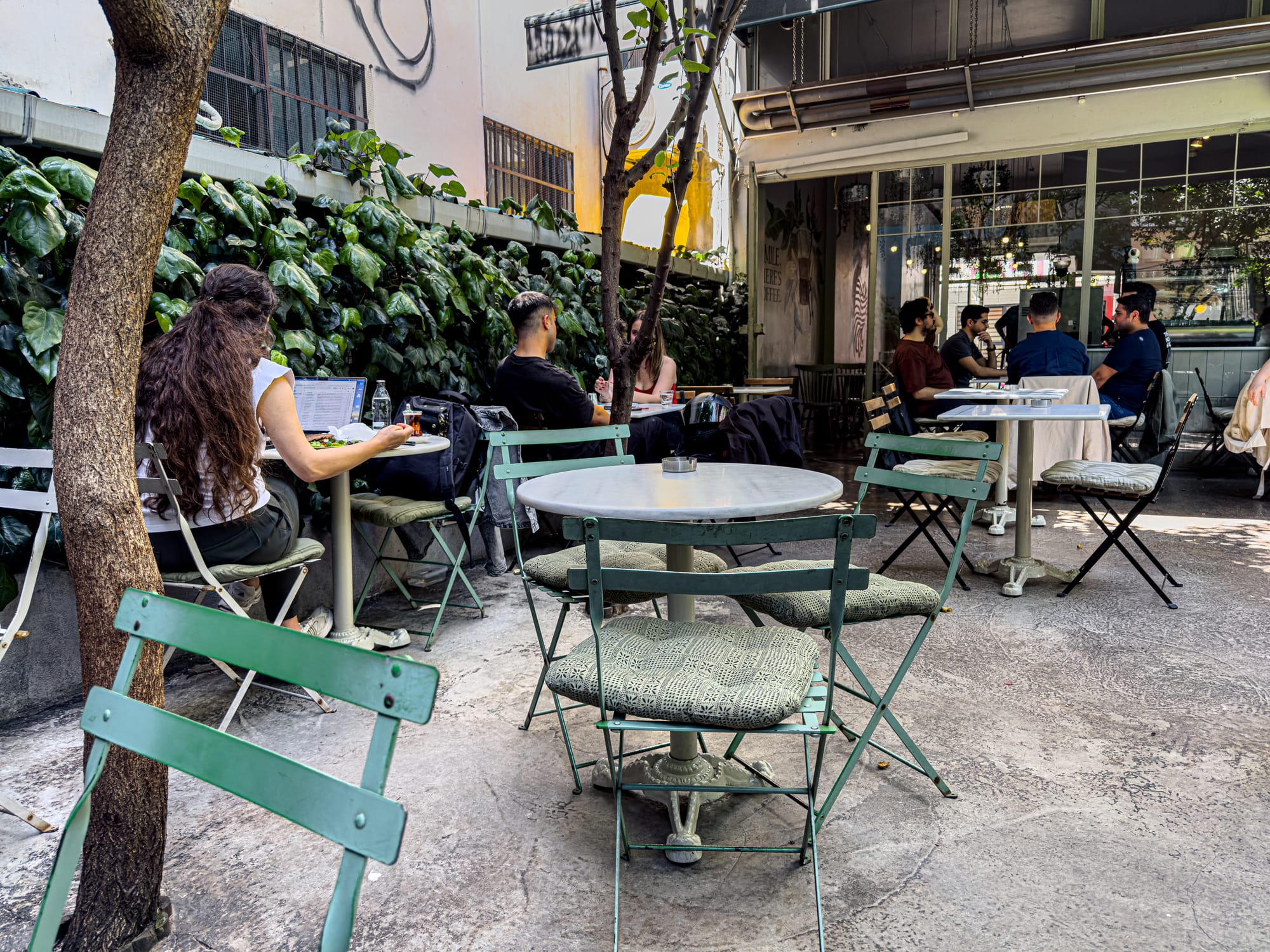
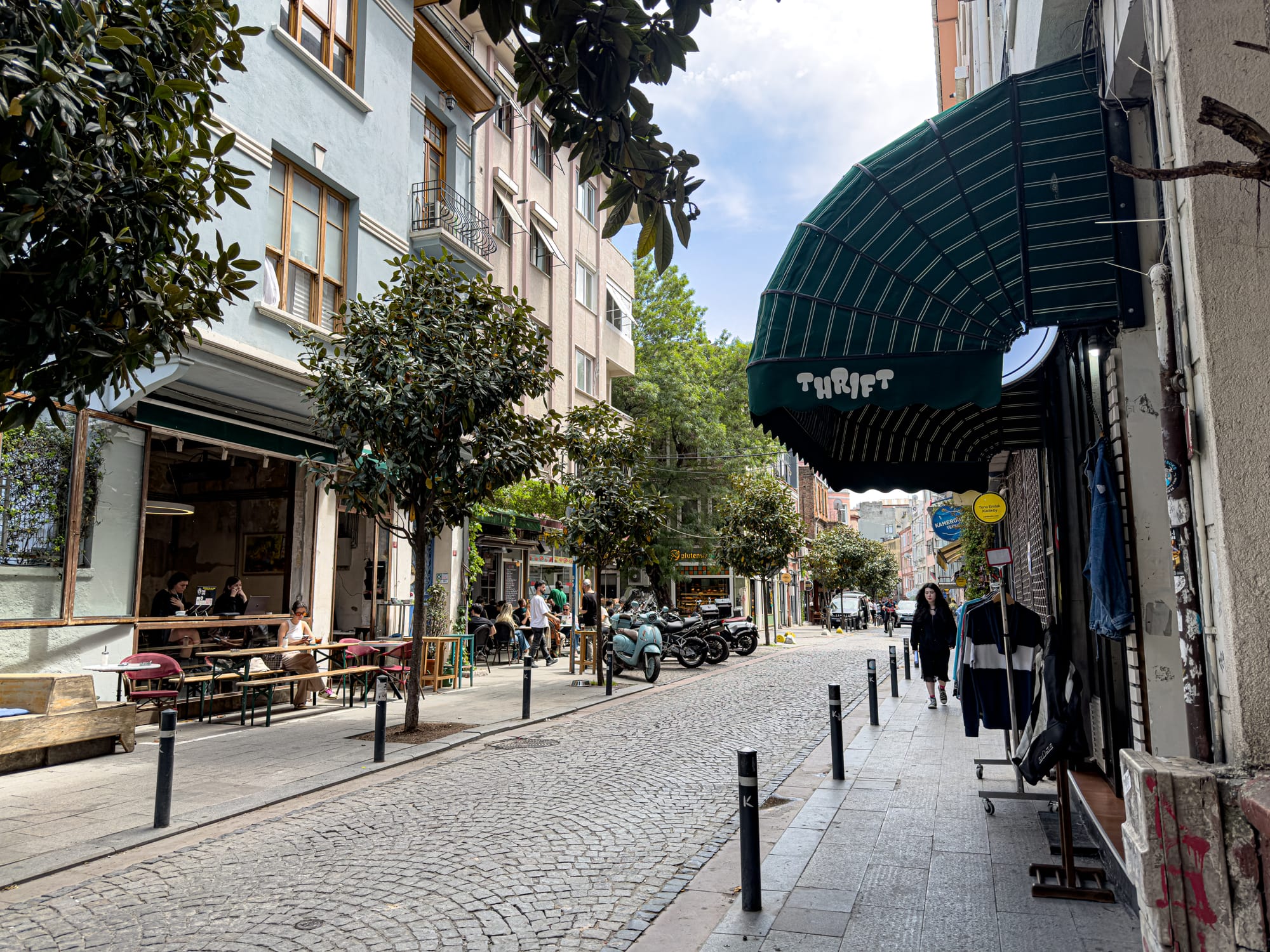
Cozy outdoor cafés and leafy streets where Istanbul’s neighborhoods invite slow, lingering afternoons
Fener and Balat, to the northwest, fold time inward. Their cobblestone streets tilt steeply between timber houses painted in weather-softened pastels. Orthodox churches stand quietly among bakeries and antique stores, the smell of bread and strong coffee mingling in the air. Cats claim windowsills, doorsteps, and the attention of every passerby.
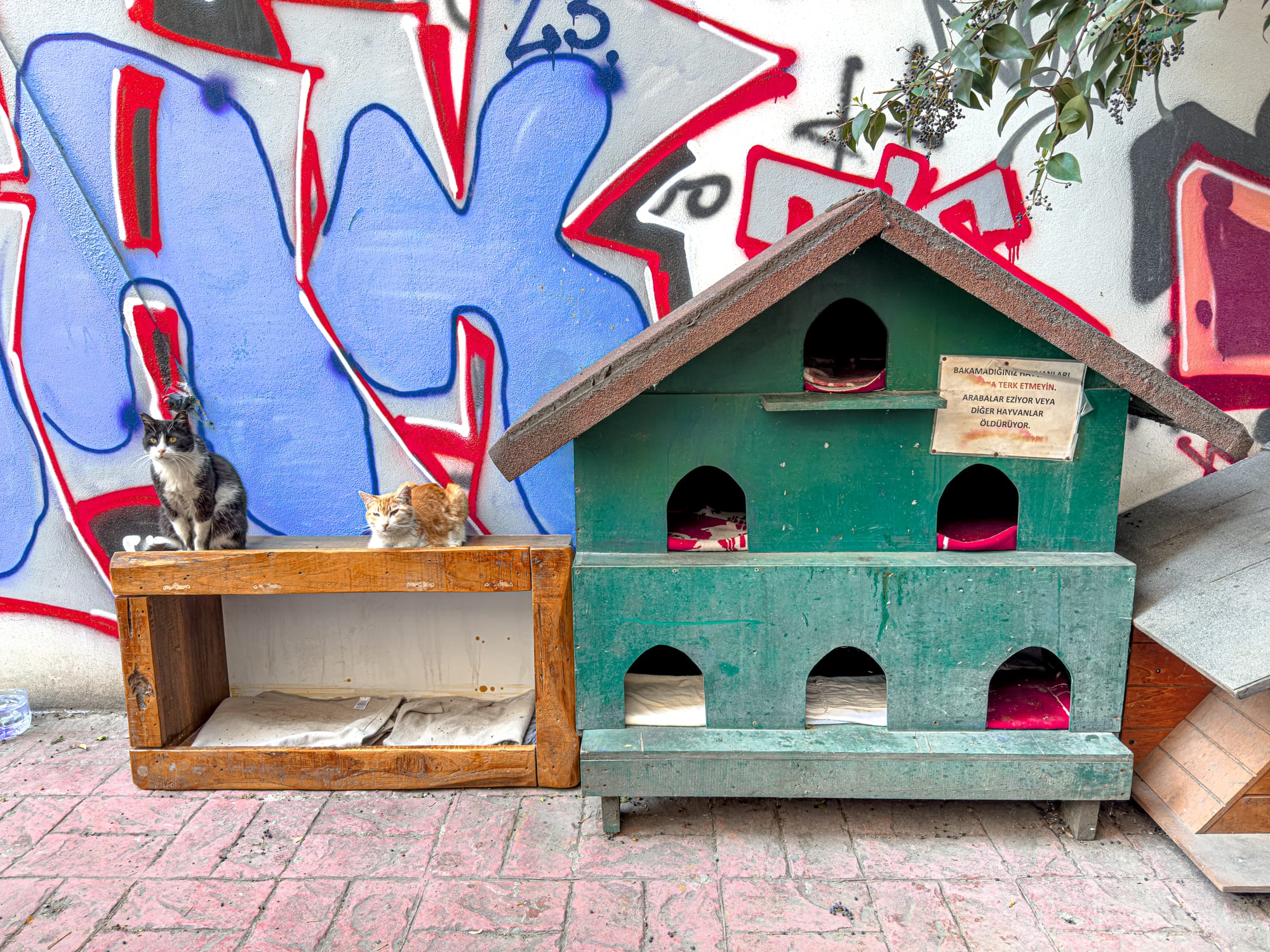
In Eminönü, the spice market explodes with scent and color—saffron, cumin, rose petals, and sumac in open baskets. Here, the streets tighten into covered alleys, every corner a possible detour.
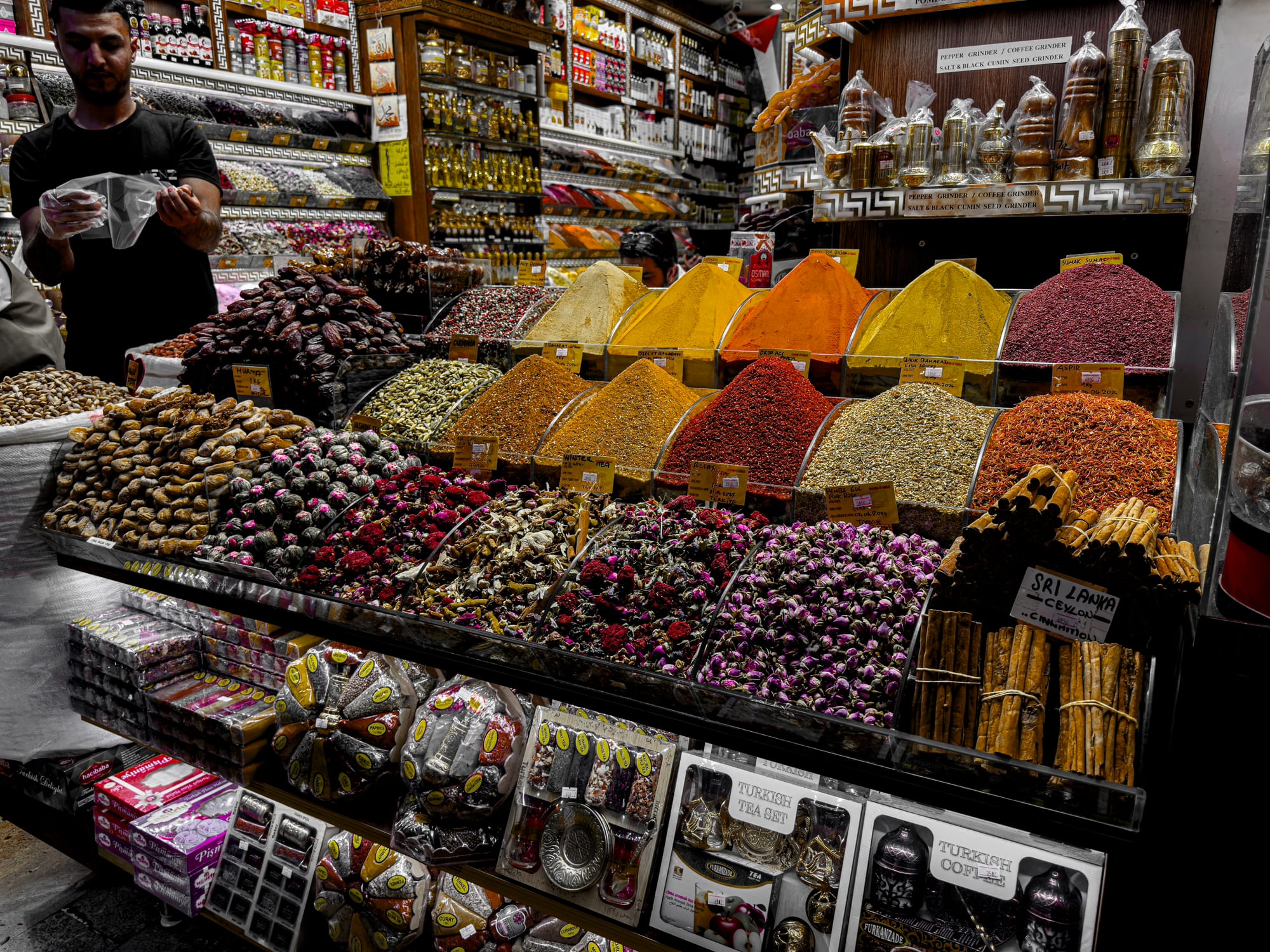
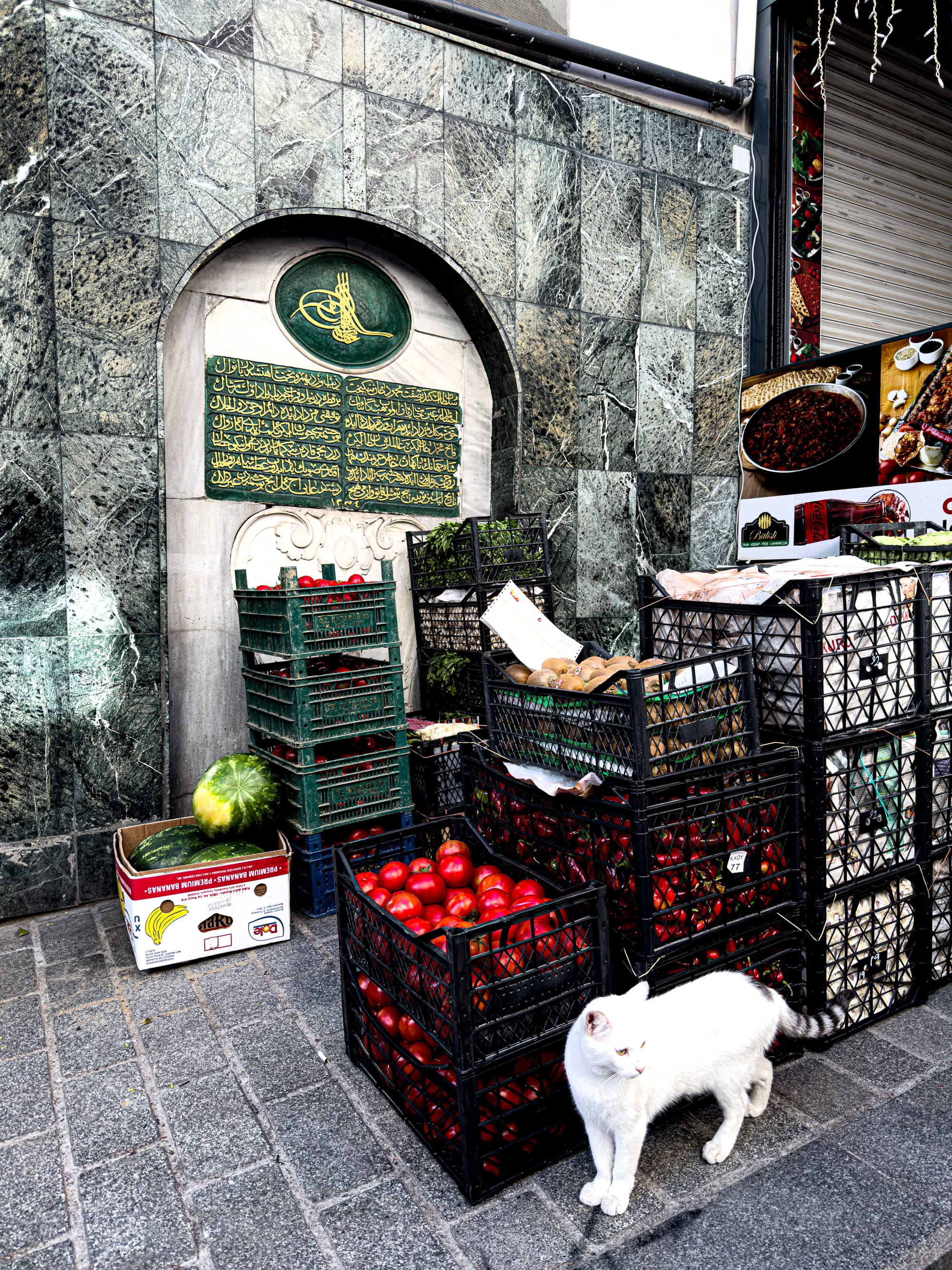
A colorful spice market display and a street cat beside crates of fresh produce
Beyoğlu is all restless inclines, lined with antique shops, art spaces, rooftop views, and the unmistakable silhouette of Galata Tower above it all. Side streets carry you into cafés upholstered in patterned fabrics, lit with a warm amber glow.
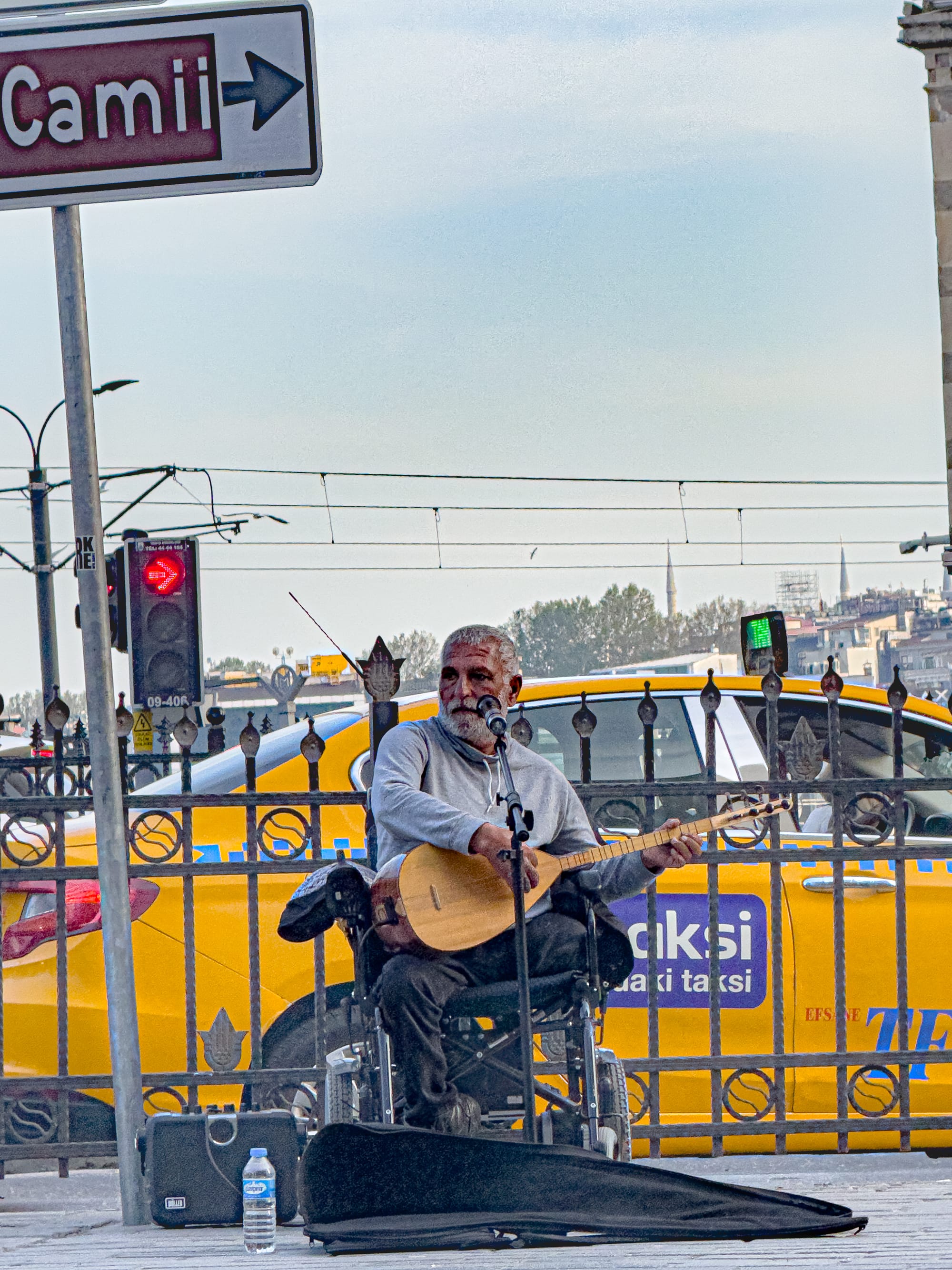
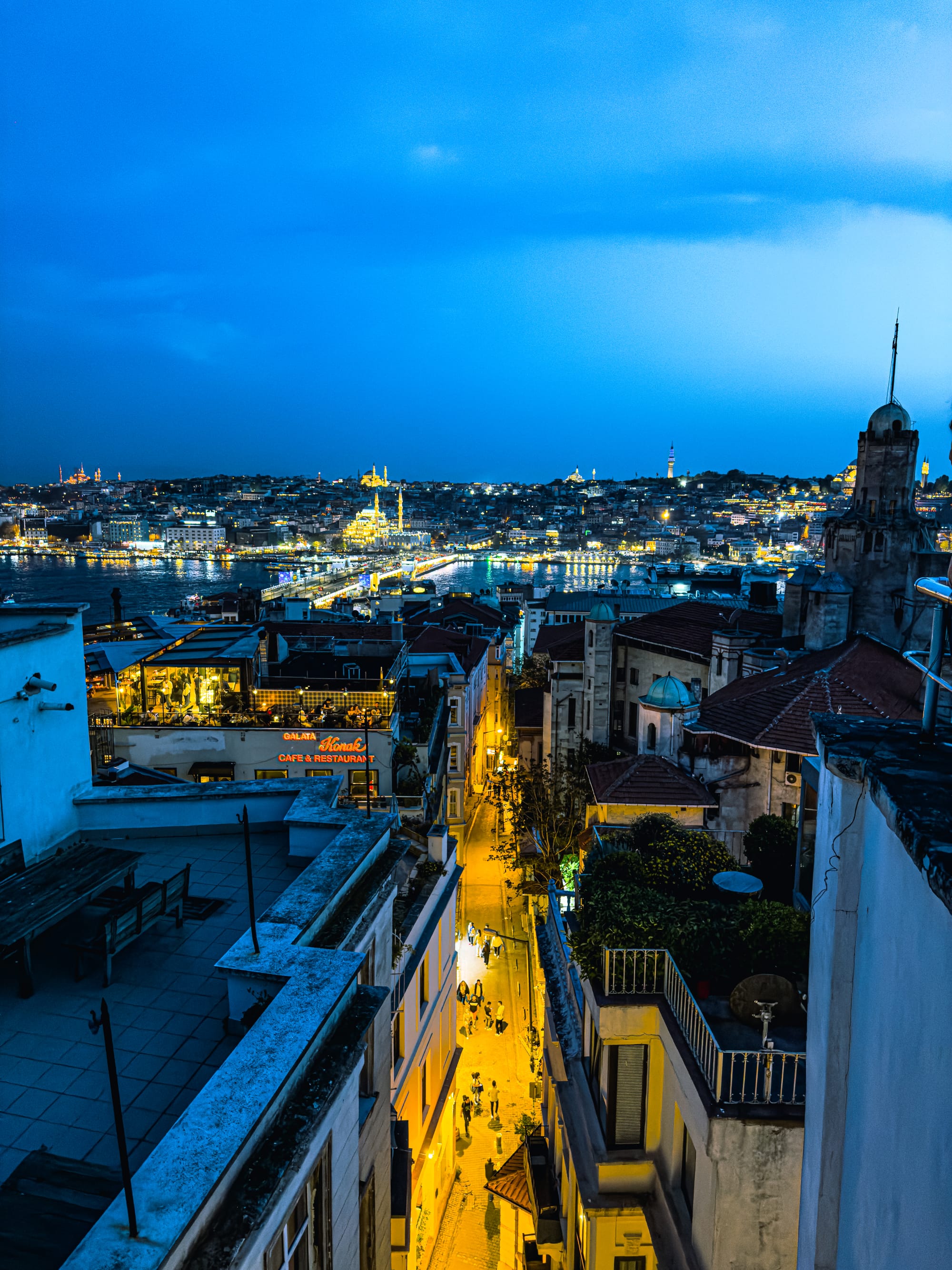
Street musician performing at sunset and a vibrant night view over Istanbul’s skyline
In Fatih—the city’s historic center—centuries of empire gather in one place. Hagia Sophia, the Blue Mosque, and the Hippodrome square hold the weight of history. The German Fountain glitters overhead with golden mosaics, and the ancient obelisk rises tall in the open air. Here, the city feels ceremonial, its scale and grandeur pulling you into a slower stride.
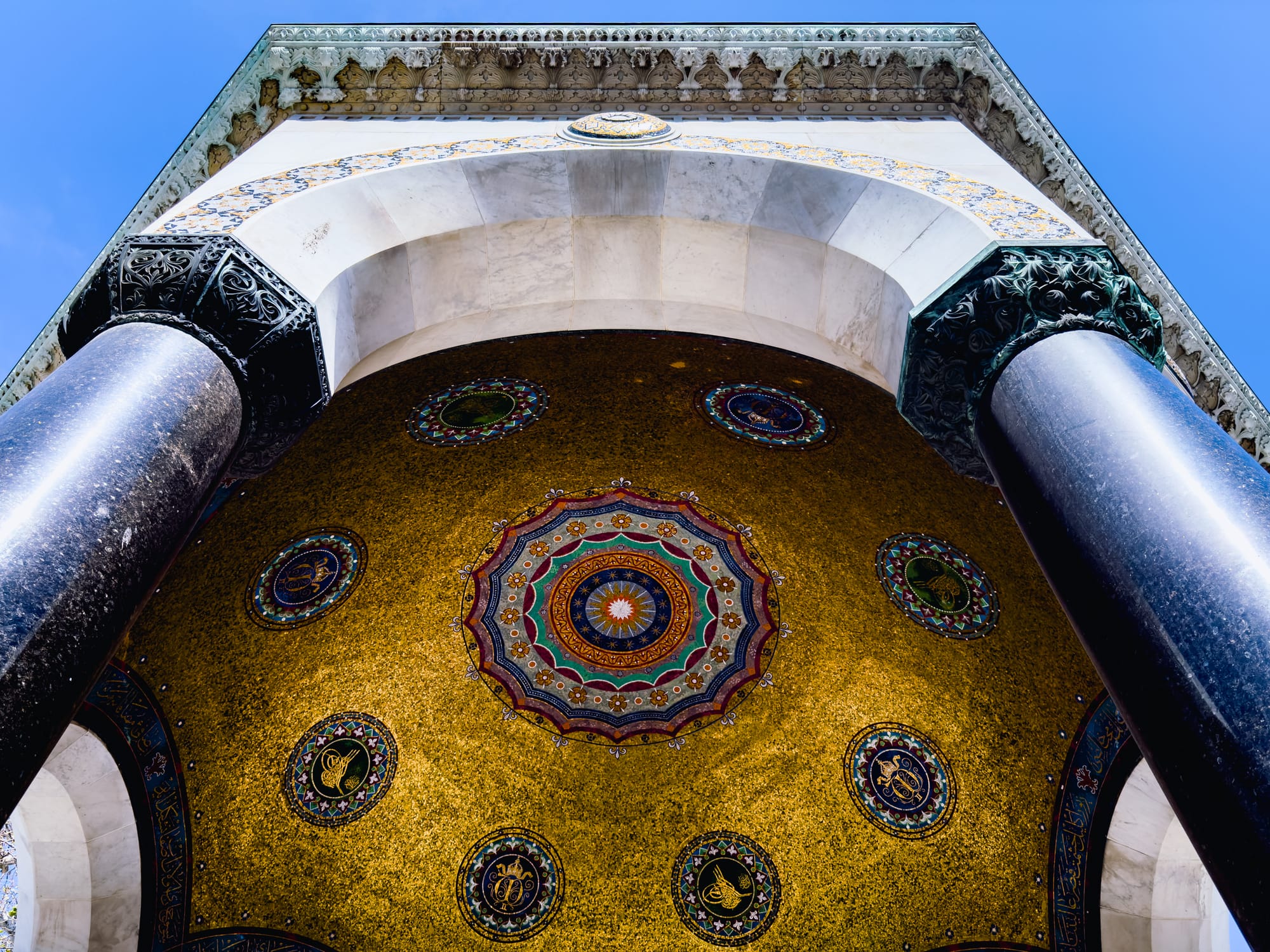
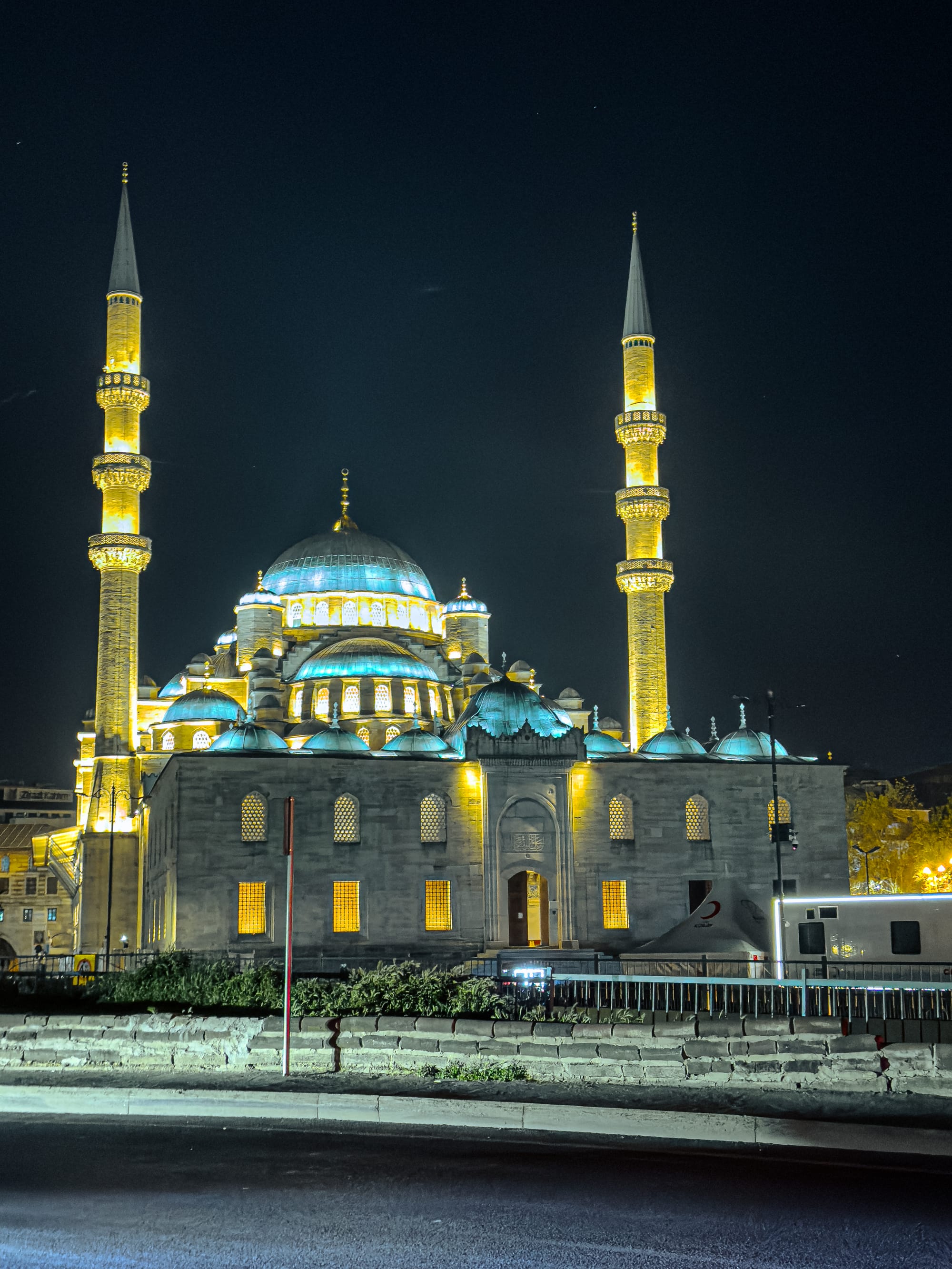
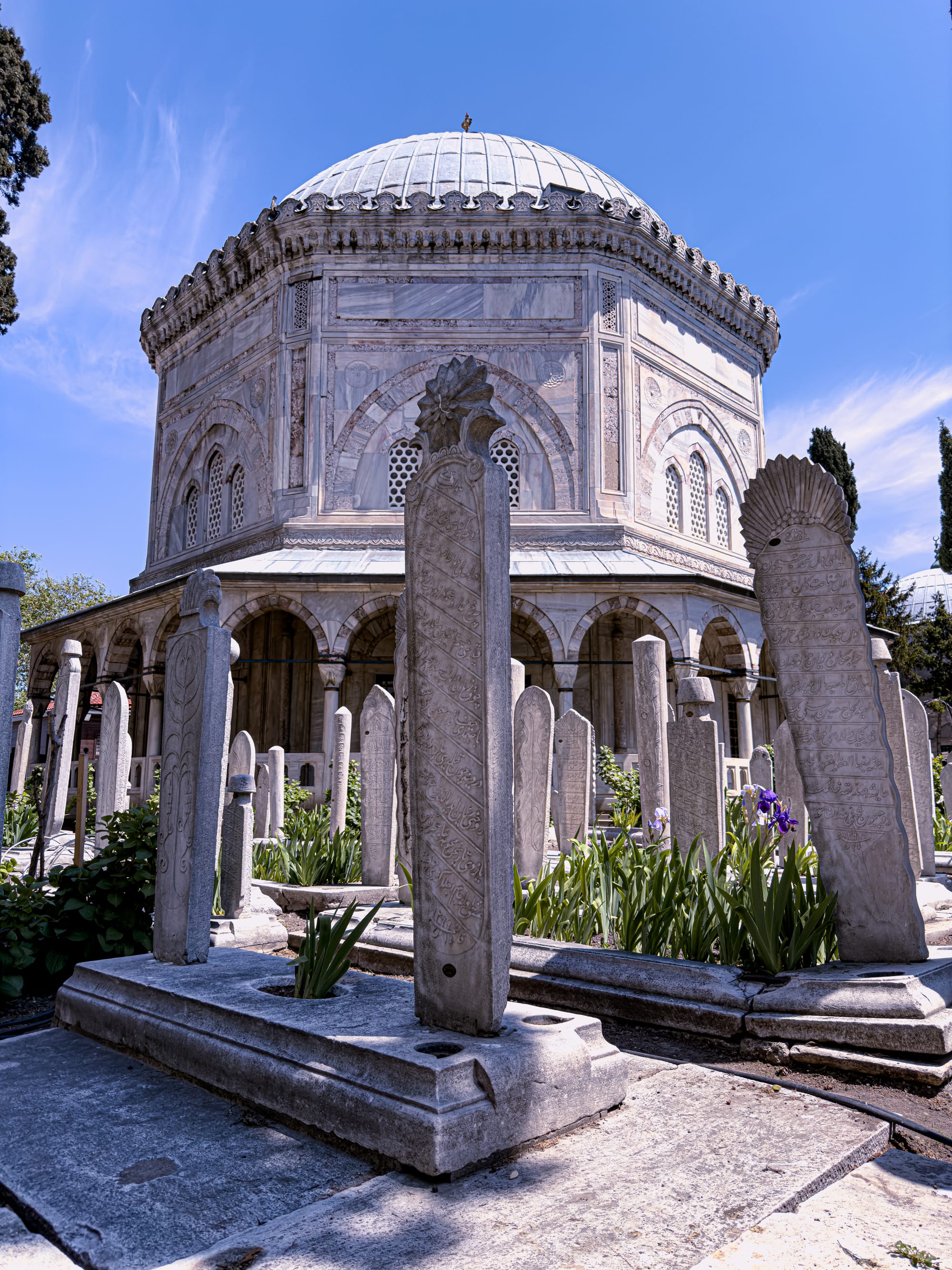
Illuminated mosque at night and historic Ottoman tombstones under a bright daytime sky
Any sense of a digital nomad “community” here is more dispersed than in smaller hubs. The city’s size means freelancers and remote workers scatter themselves across neighborhoods, each pulled into the rhythms of their chosen corner.
Working in the in-between
Work here finds its own texture. You might spend the morning in a seaside café in Moda, the air salted from the breeze off the Marmara, wifi humming beneath the clink of tea glasses. Or settle in at a quiet table in Balat, framed by stacks of books, where the sound outside is the slow tread of footsteps on stone.
The book bazaar near Beyazıt Square is a warren of printed pages and narrow aisles, its tables piled high with old and new. It’s easy to lose an hour here between meetings, drifting between titles in Turkish, English, and French. The walk back might take you past Istanbul University’s imposing gates, their white stone bright against the sky.
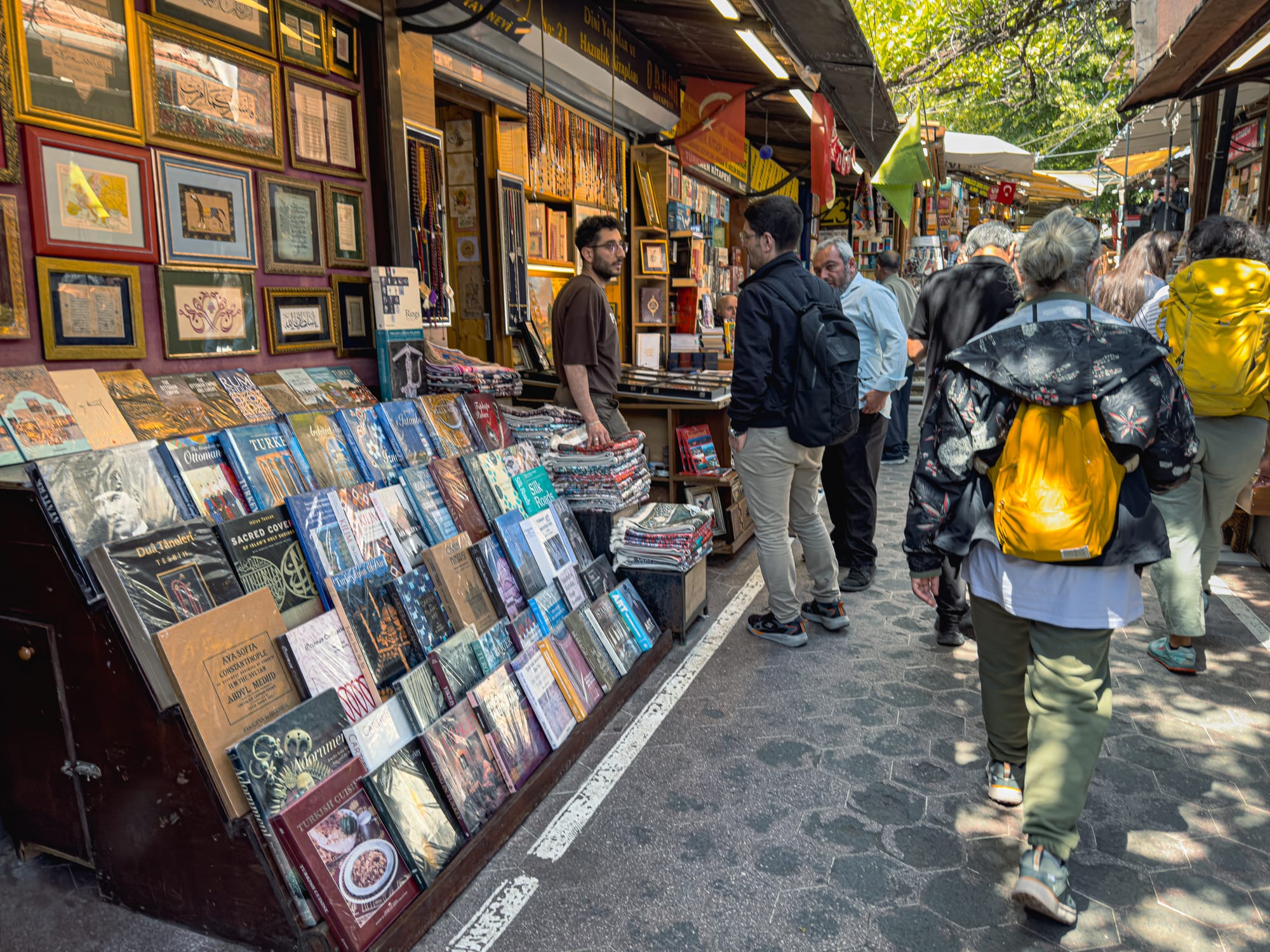
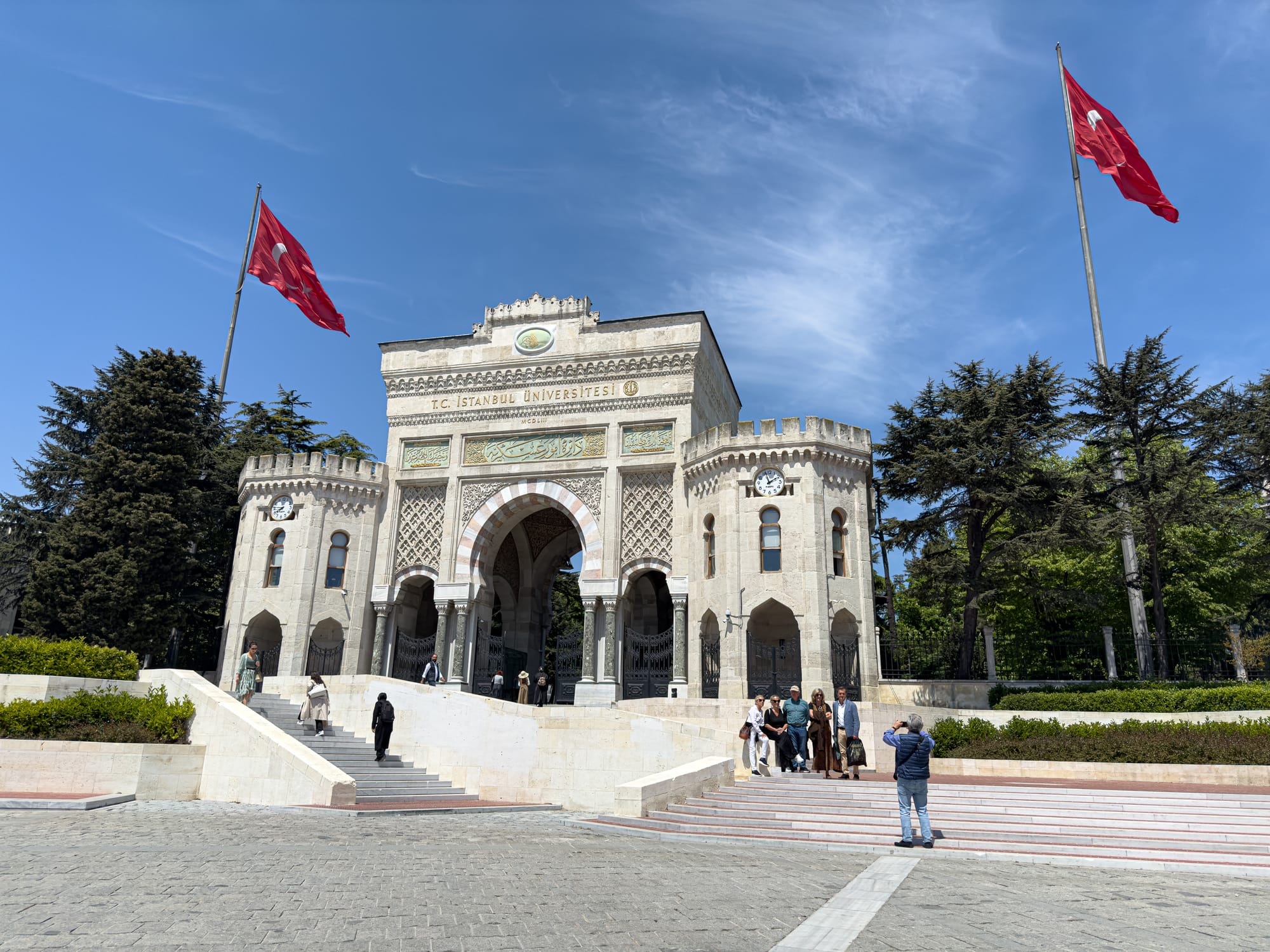
Book Bazaar stalls and Istanbul University’s grand historic entrance
Some days, your desk is a bench in Gülhane Park, with rows of tulips unfurling in purple.
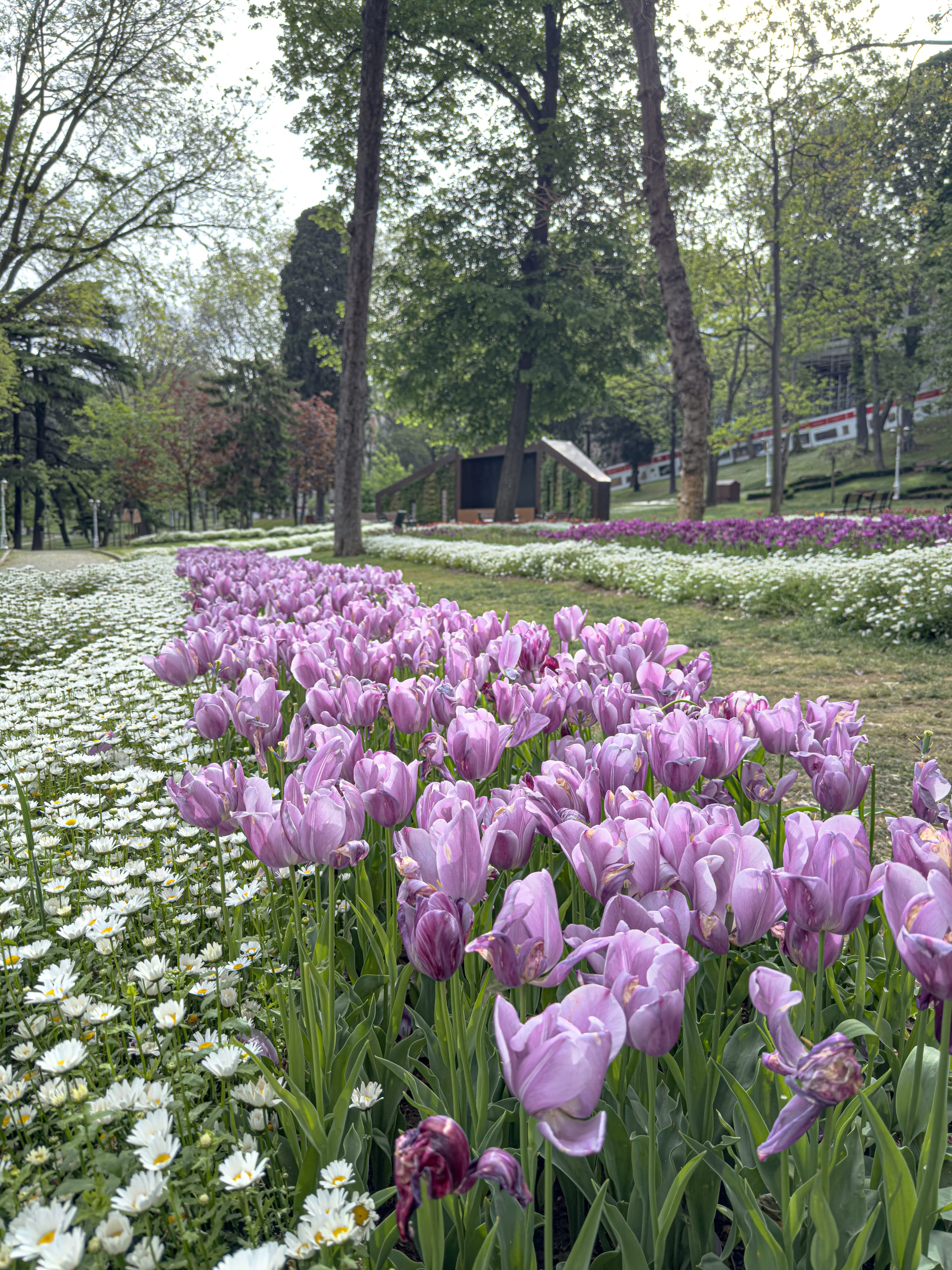
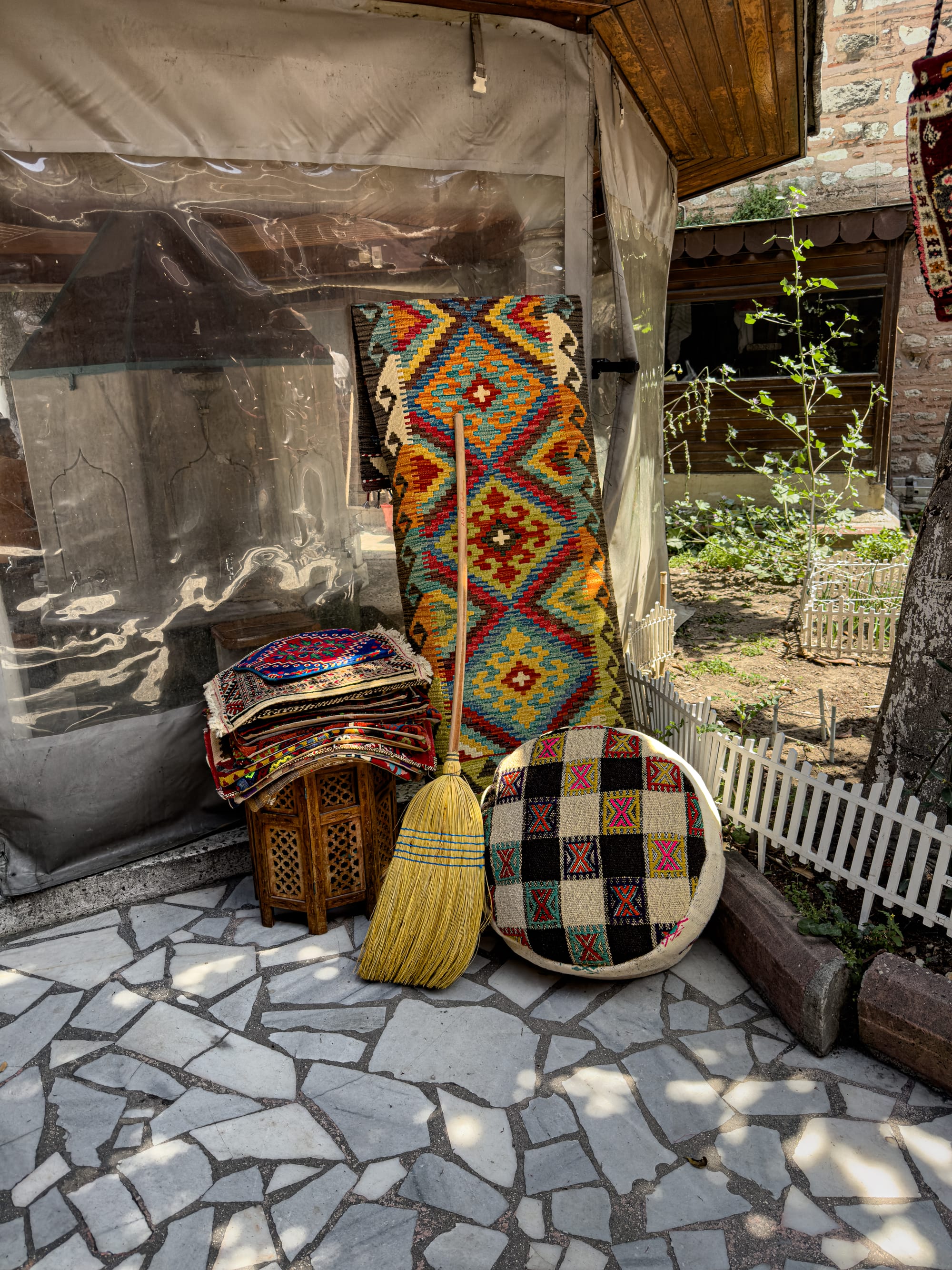
Spring tulips in bloom and colorful woven rugs displayed outside a shop
Others, it’s the shaded corner of a tea house in Eminönü, a pomegranate juice on the table beside your laptop. The work folds into the movement of the day, never separate from the place you’re in.
The streets as a map of time
Every walk is a conversation with the city’s past and present. In one direction, you pass fragments of Byzantine walls, moss-softened and standing quiet in a garden. In another, you find yourself in a market where copper pots gleam under hanging lanterns. A side street might open into a courtyard scattered with marble columns, remnants of some long-vanished structure.
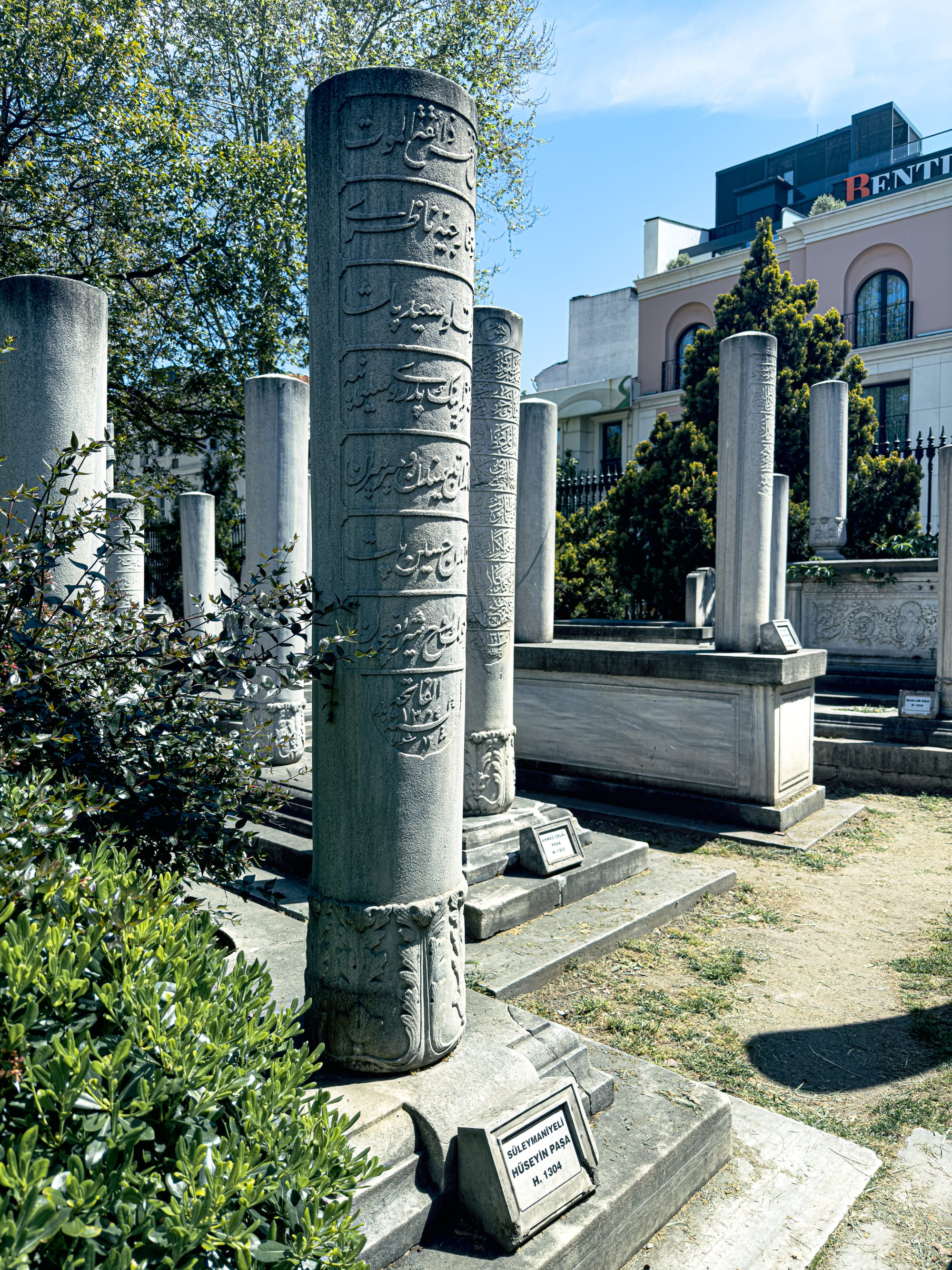
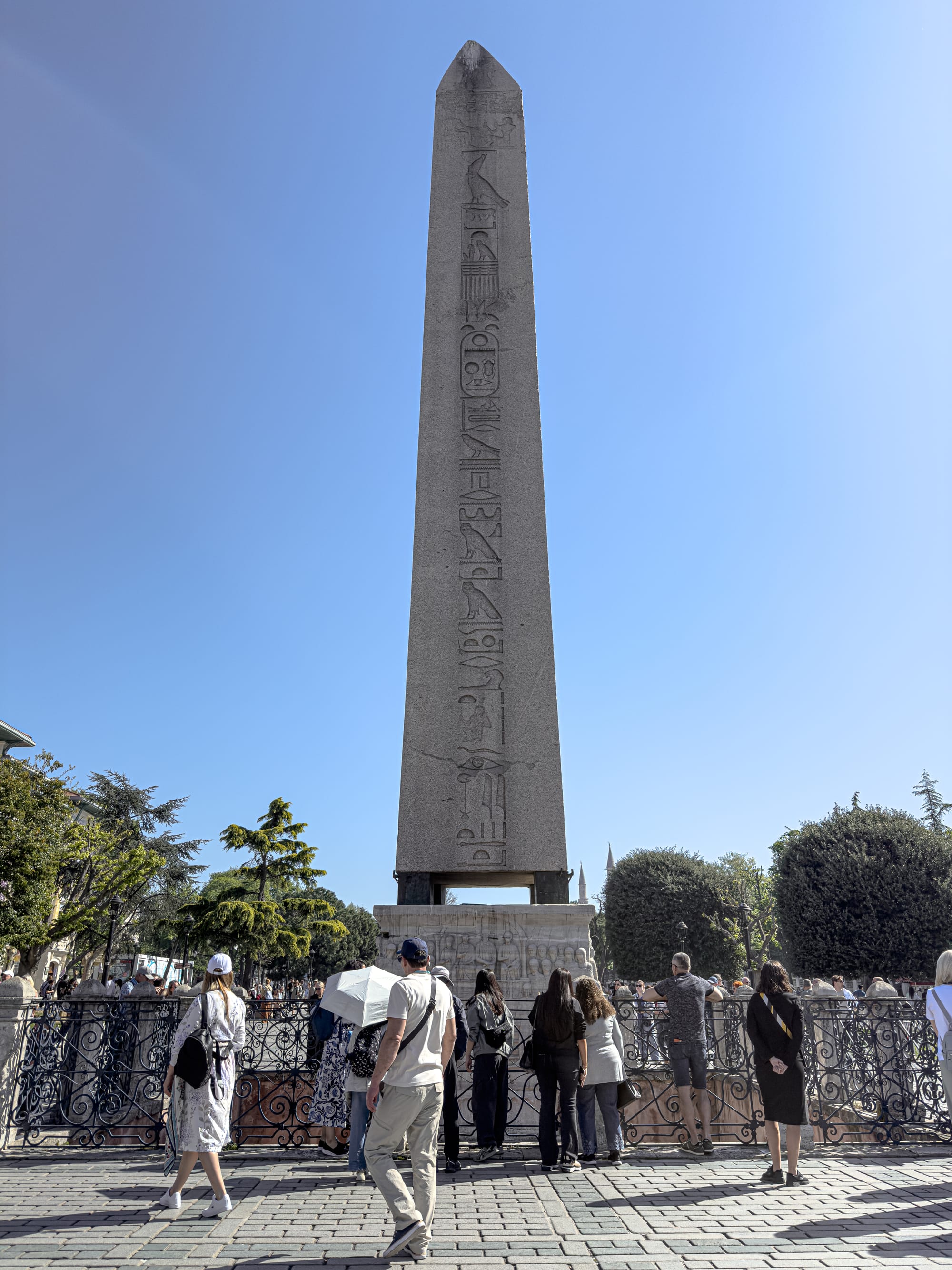
Historic Ottoman tombstones and the ancient Obelisk of Theodosius in Istanbul
In the Grand Bazaar, the floor is worn smooth by centuries of traders. Cats sleep in the shade of carpet stacks, while shopkeepers call out from stalls layered in textiles. Outside, in side streets, the grit of the city is clear—paint peeling from shutters, graffiti marking brick walls, cobblestones uneven underfoot.
In Balat, the tilt of the streets changes how you walk, slowing your steps, pulling your gaze upward to where laundry lines stitch the space between houses. In Fatih, the open expanse of Sultanahmet Square lets you see the monuments in relation to each other, the domes and minarets drawing invisible lines across the skyline.
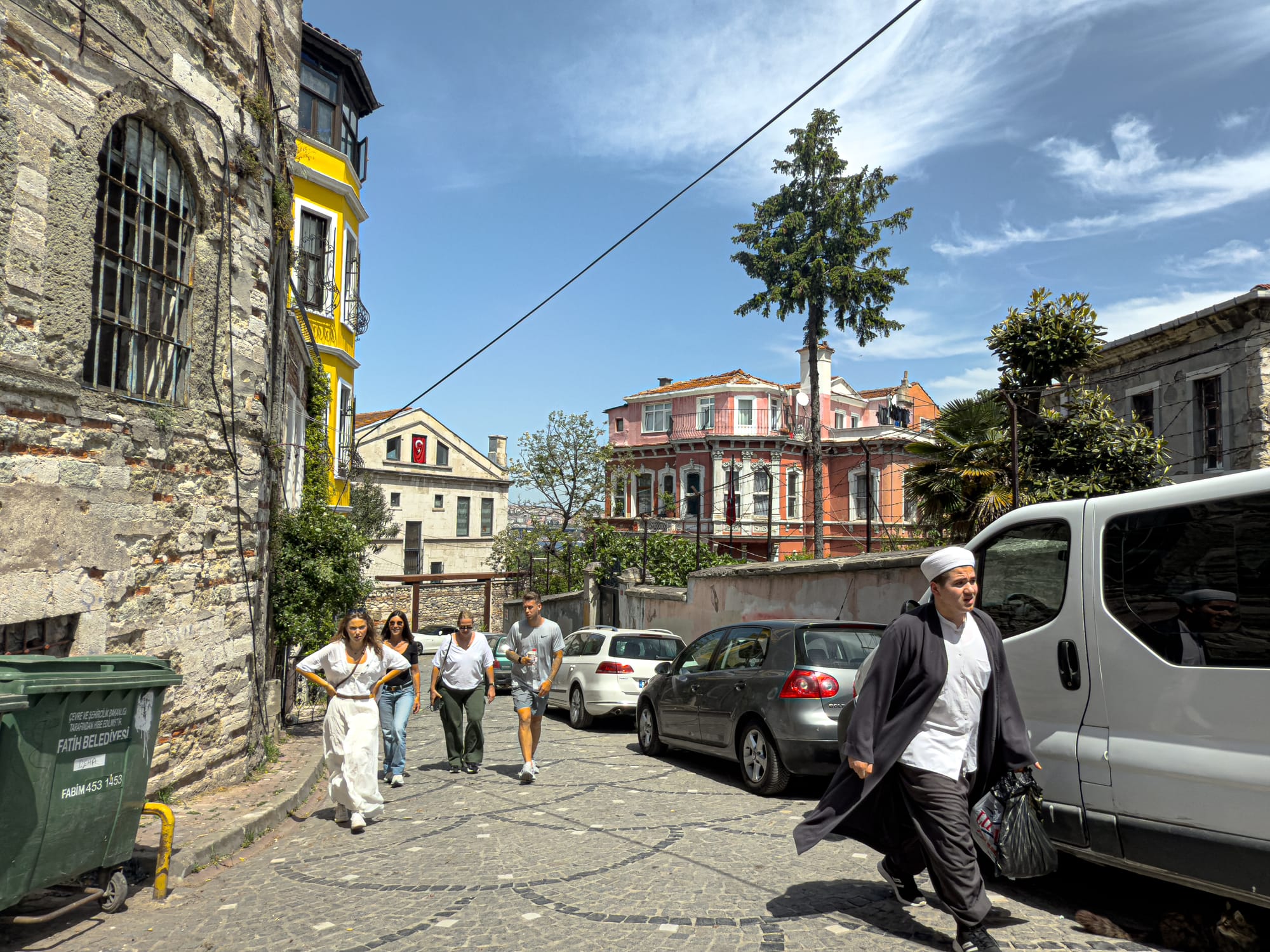
Every route teaches you something about the city’s clocks: the measured pace of neighborhoods where time lingers, the quick pulse of markets where each minute is filled. Walking here is never just transit—it’s a way of reading history in motion.
Digital nomad life across the city
Life here as a digital nomad is as much about navigating scale as it is about navigating culture. Istanbul is too large for a single coworking hub or café circuit to define the scene—your network will be scattered, woven from one-off encounters and intentional meetups. You might meet another freelancer while charging your laptop in a Kadıköy café, then not cross paths again until weeks later at a photography exhibition in Beyoğlu.
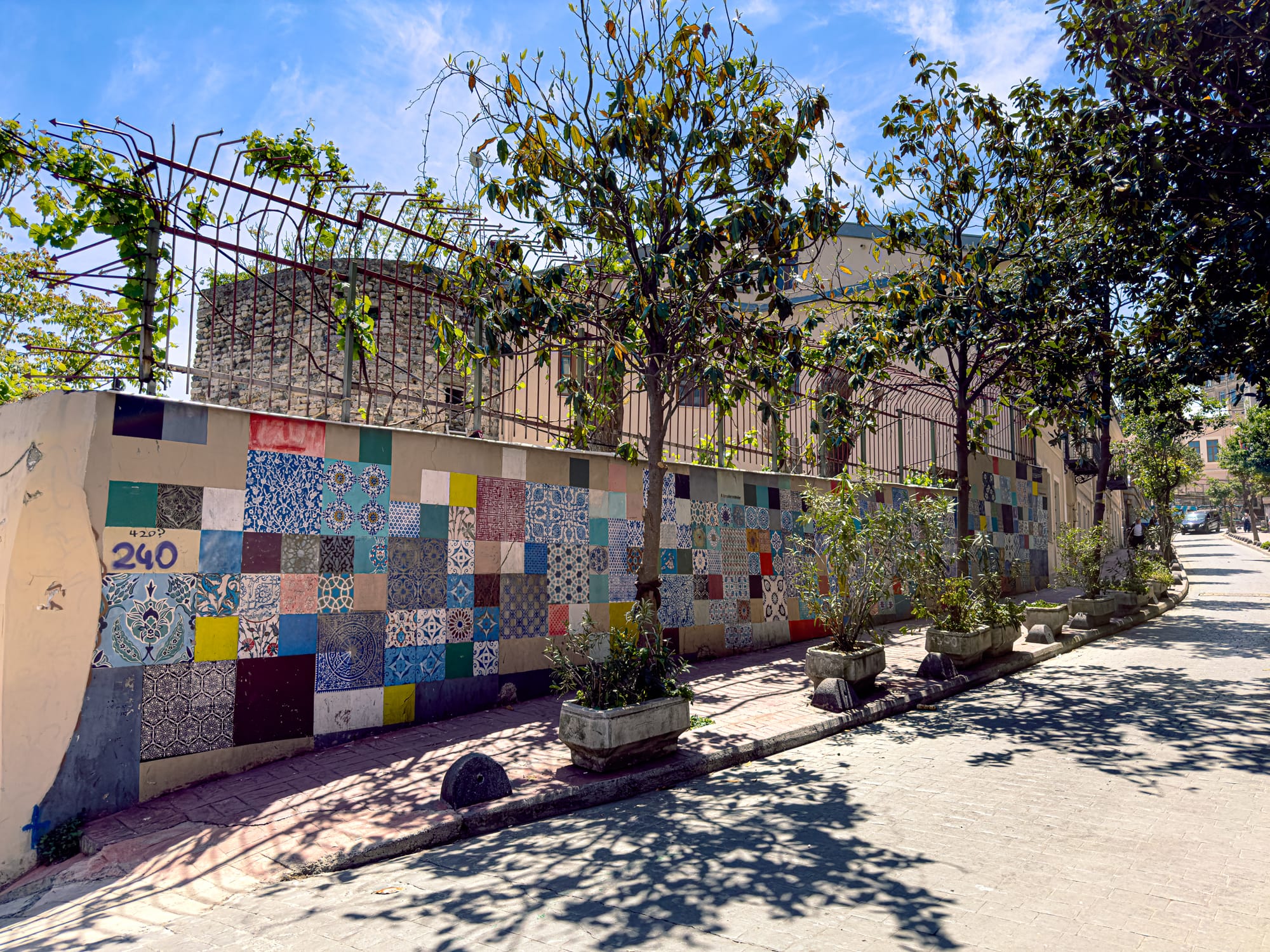
Daily routines are shaped by the city’s sprawl. A meeting might mean a ferry ride across the Bosphorus, your notes balanced on your knees while gulls follow in your wake. Afternoons can vanish in a neighborhood you didn’t plan to visit—stepping into a ceramics shop in Üsküdar, finding yourself in an impromptu conversation about glaze techniques, then working from a park bench overlooking the water.
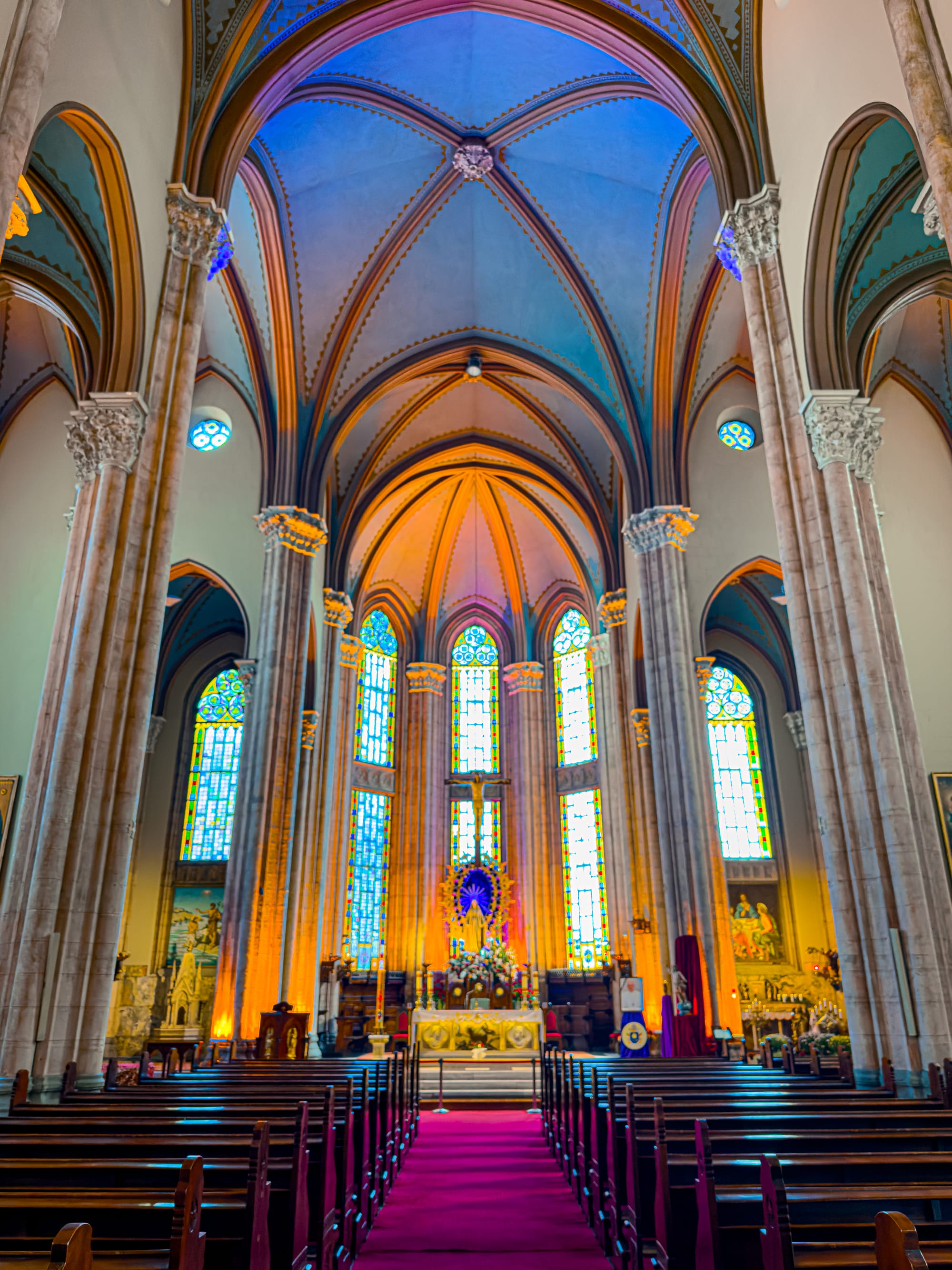
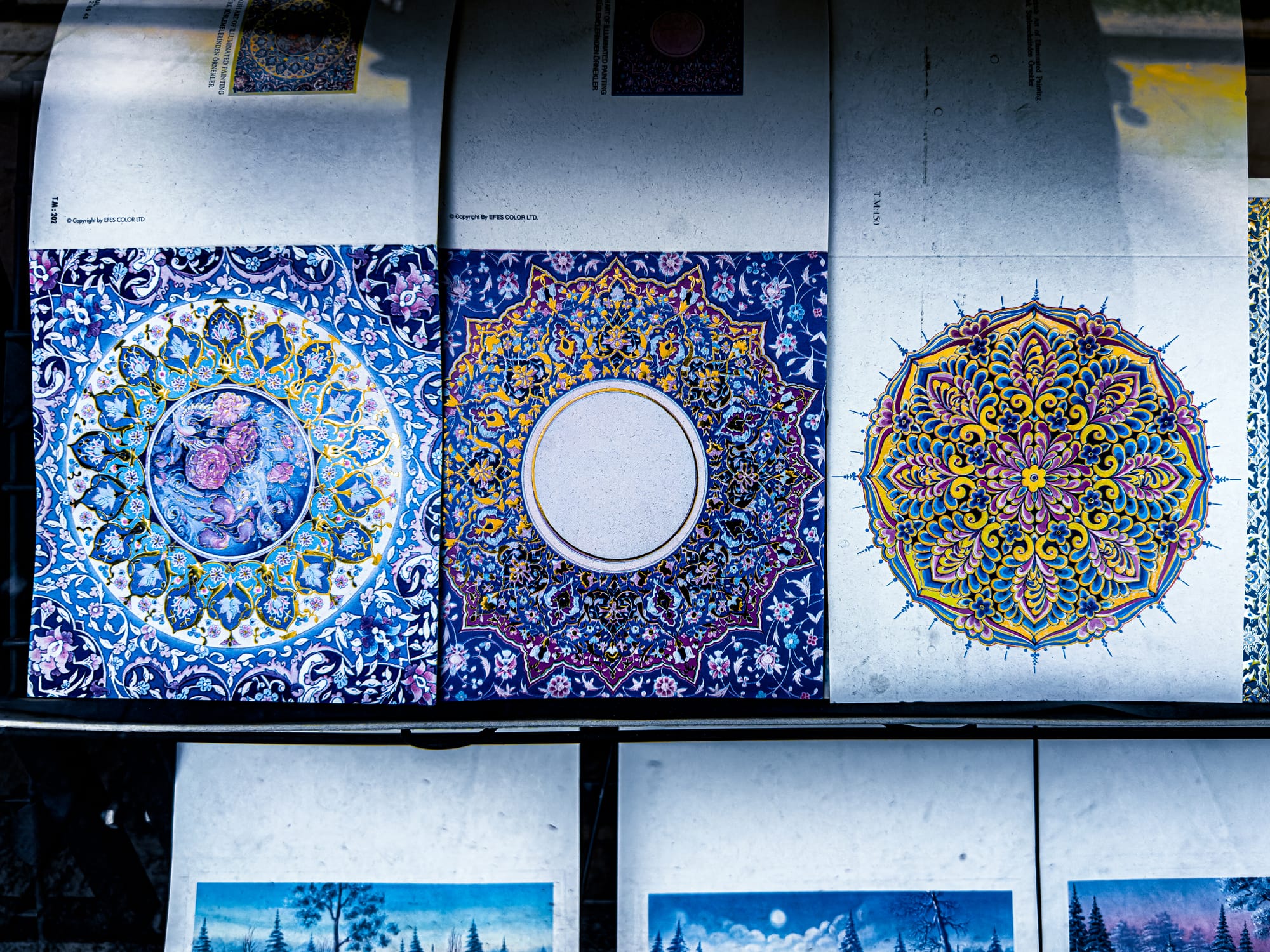
Stained-glass-lit church interior and vibrant patterned art in Istanbul
Your lunch break could be a plate of lentil soup in a tiled lokanta where office workers, shopkeepers, and students all take their seats at the same time. Your post-work hours might involve wandering a residential backstreet where children kick footballs under vine-draped balconies, or pausing in front of a crumbling wall where a mural blooms against the brick.
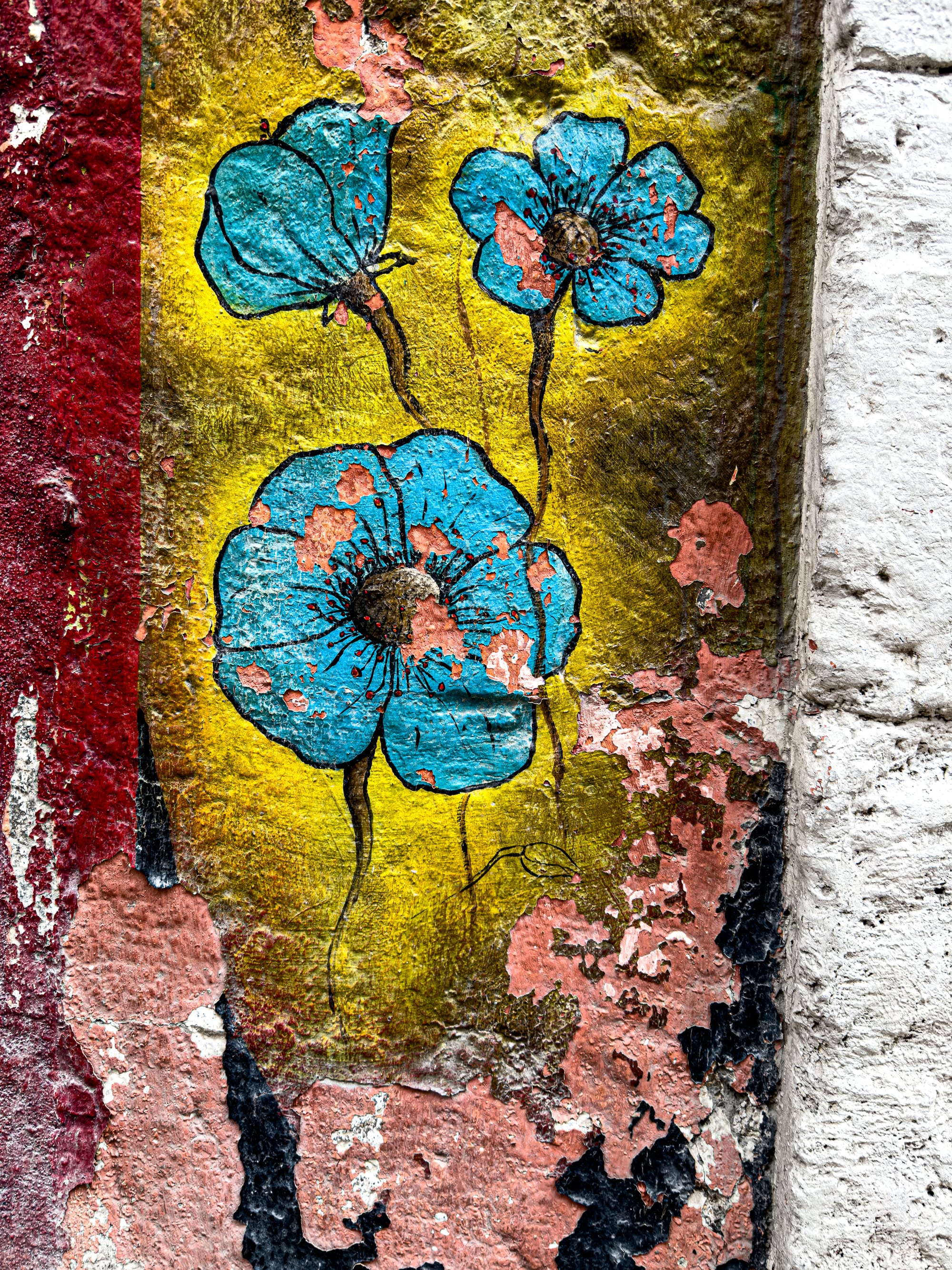
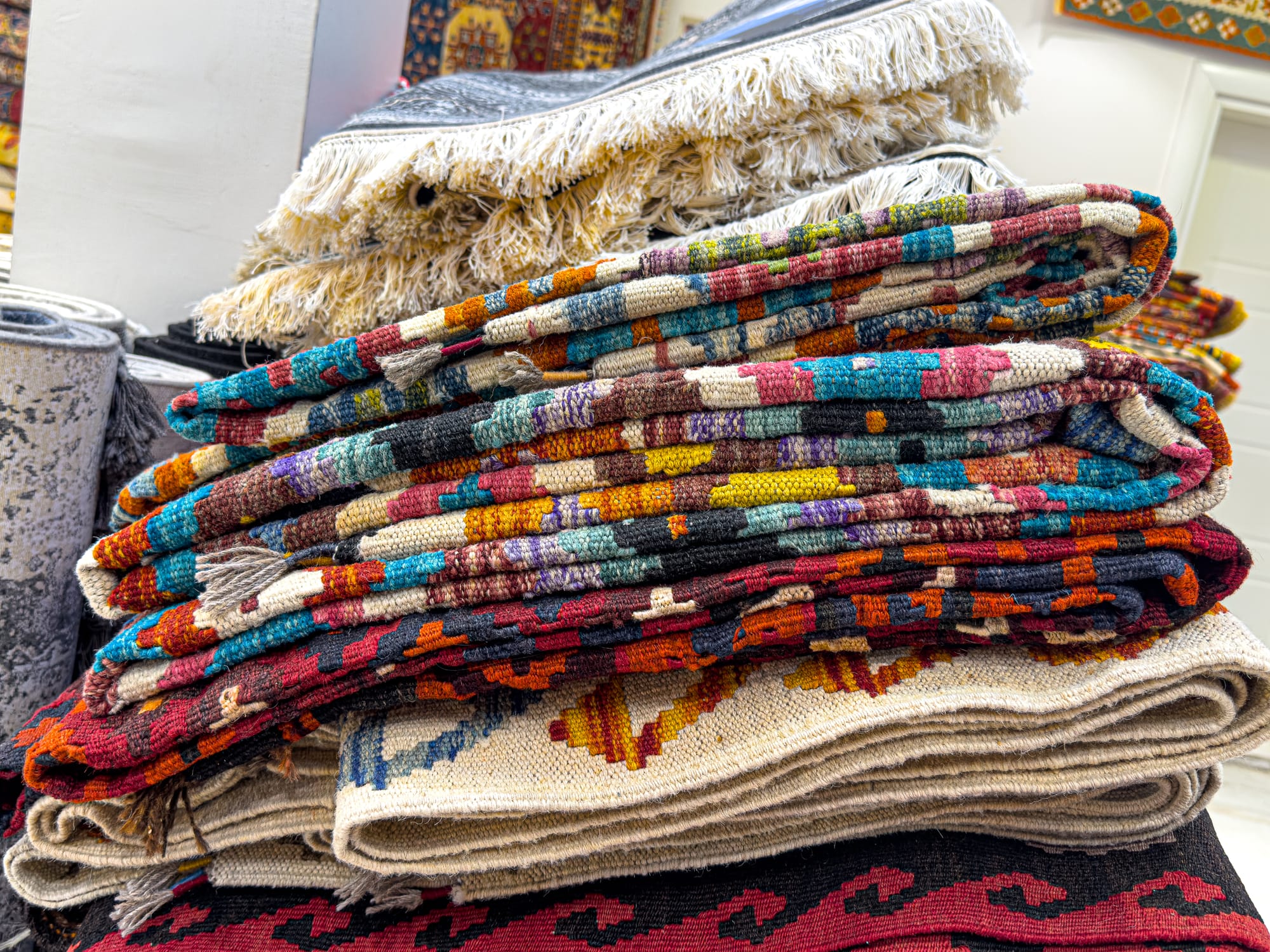
Peeling floral street art and stacks of colorful woven rugs in Istanbul
Istanbul makes you conscious of the elasticity of time. Tasks stretch and contract depending on where you’re headed and how you travel—tram, ferry, on foot. The city asks you to adapt, to fold its rhythms into your own: slower in the parks, quicker in the markets, unrushed at the table. Over weeks, you start to measure your workdays not just in completed tasks, but in how many streets you’ve crossed, how many layers of the city you’ve stepped through.
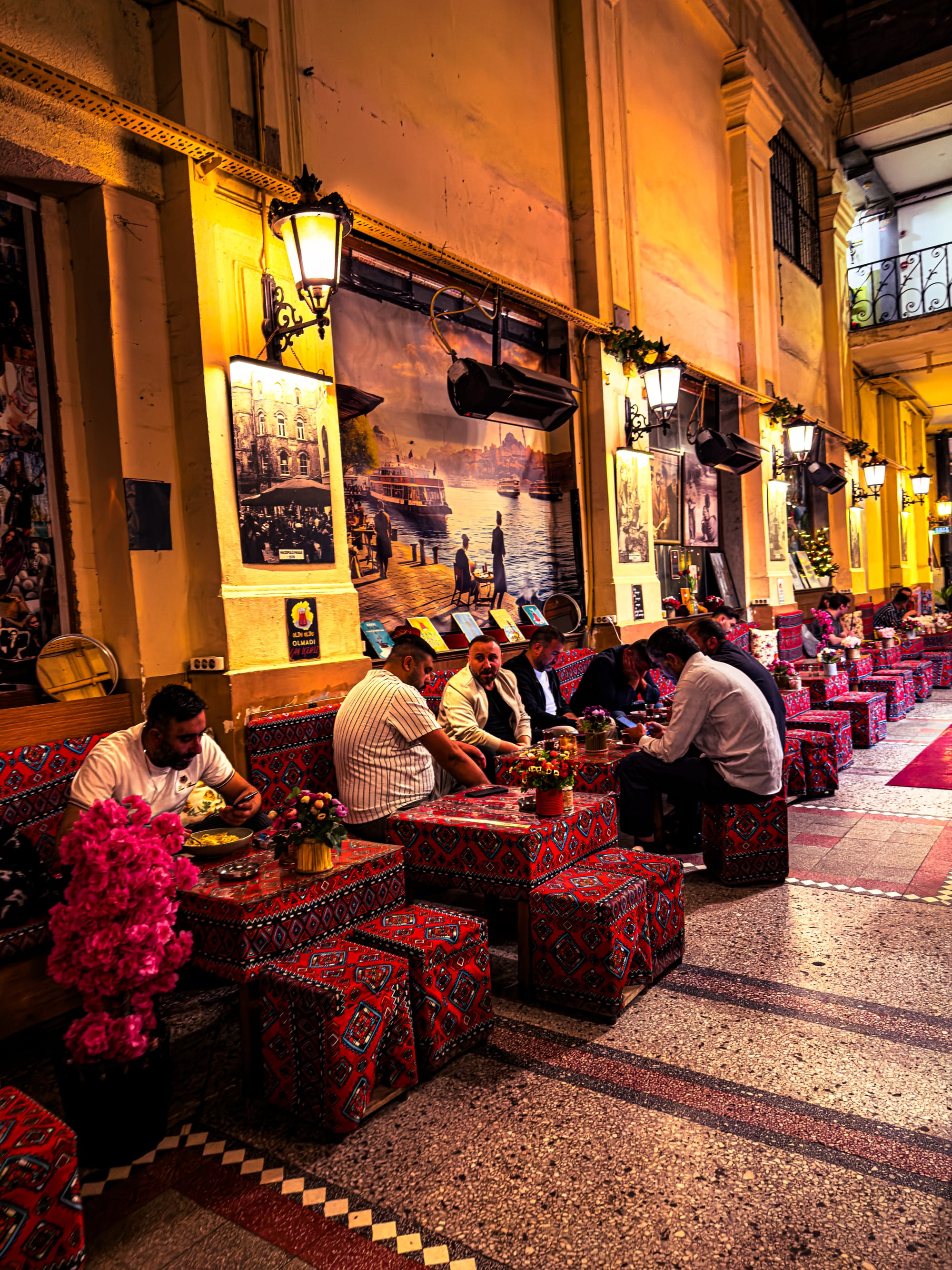
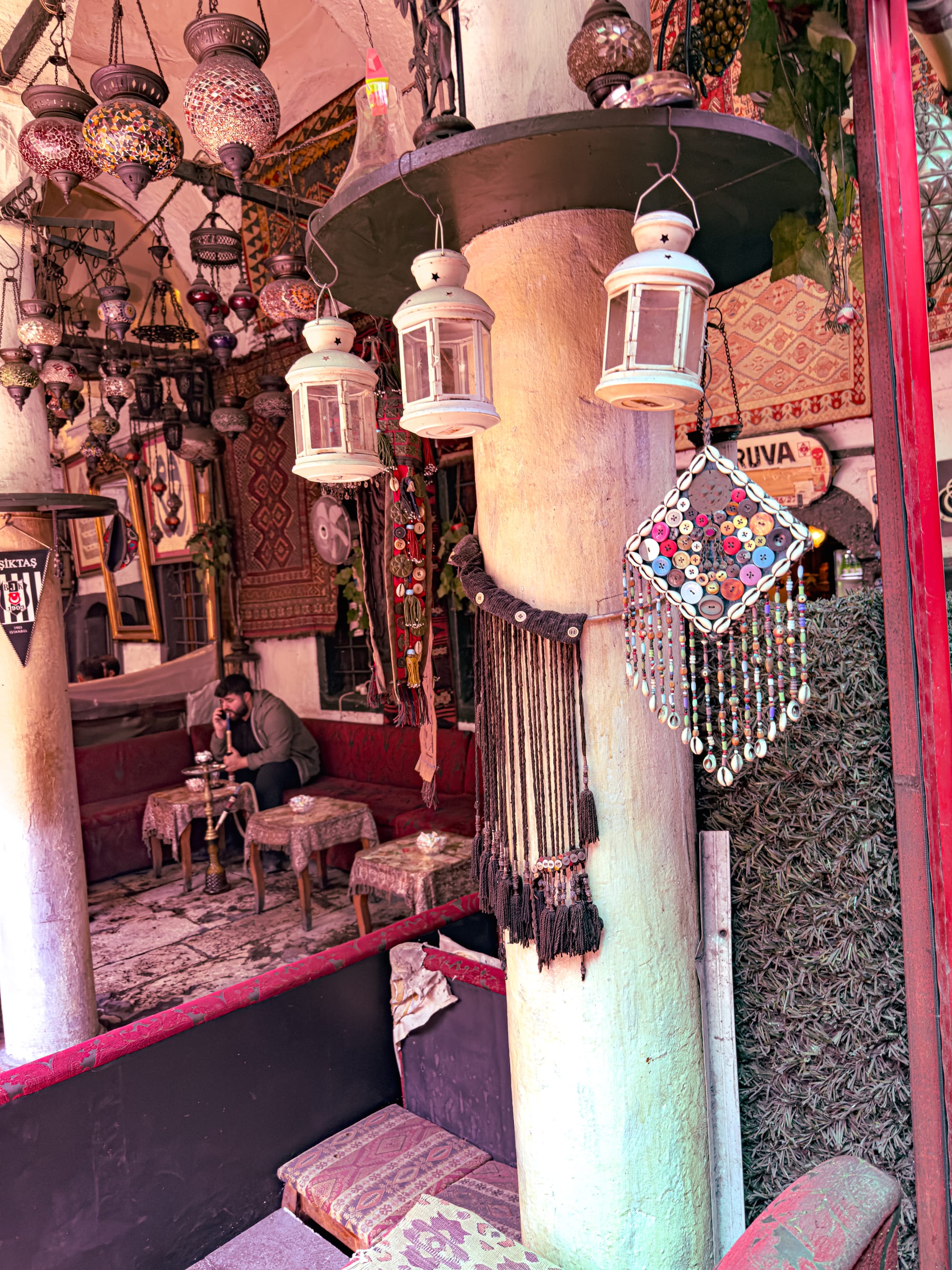
Traditional tea and shisha houses in Istanbul with patterned seating, hanging lanterns, and warm evening light
This is what working here becomes: a balance between the independence of remote work and the grounding of place, a profession carried in your bag but shaped each day by the city that surrounds you.






